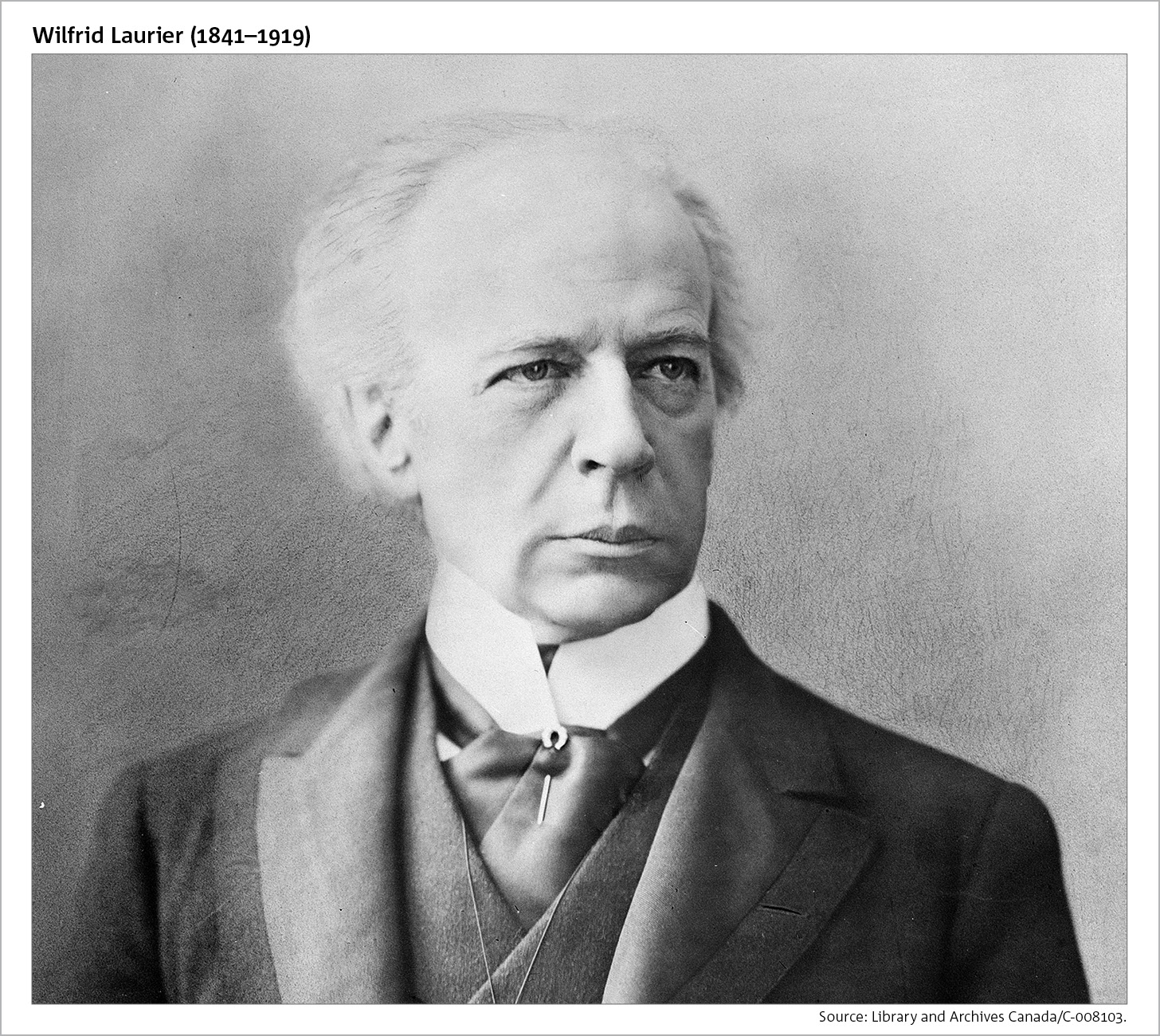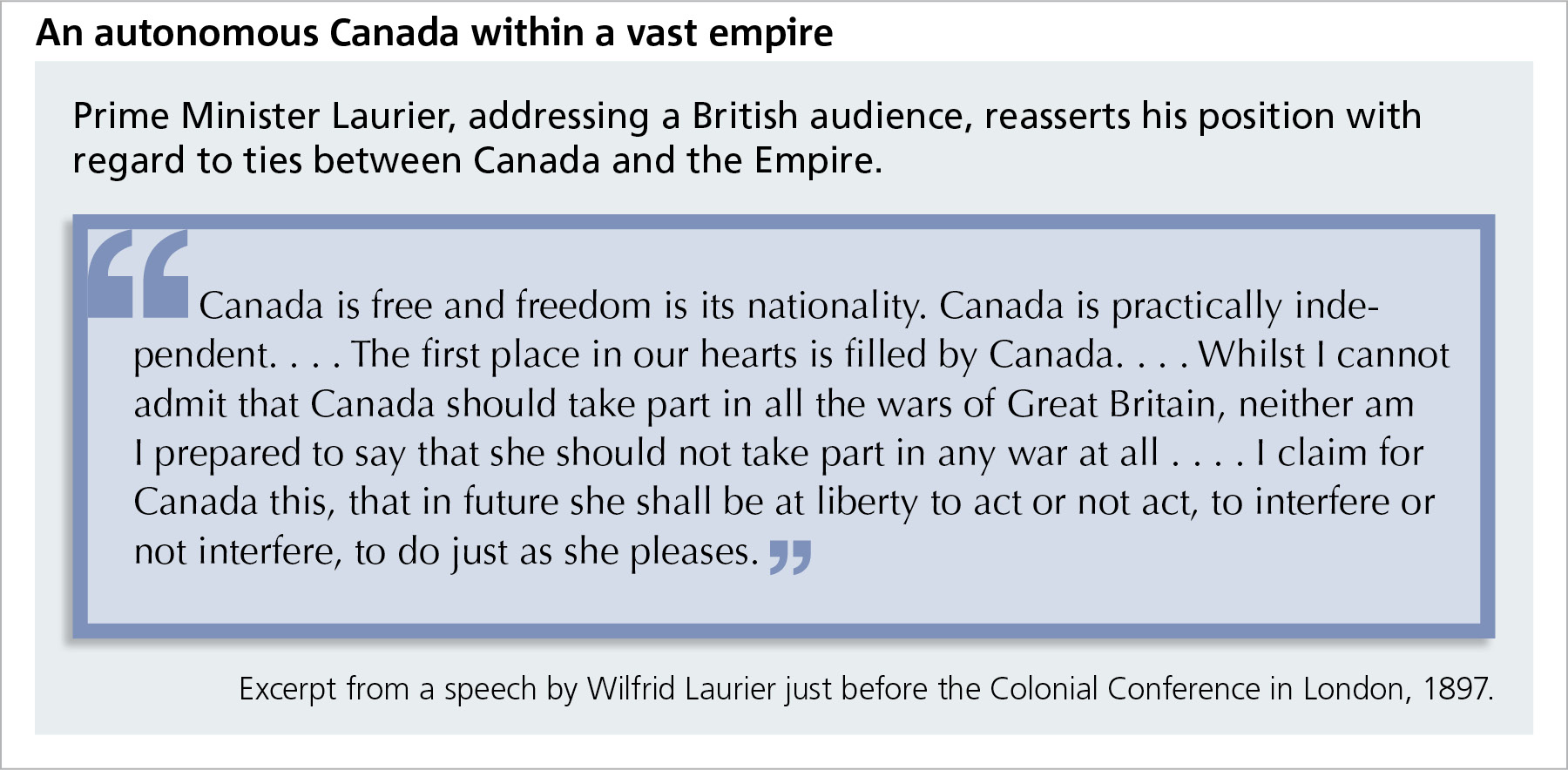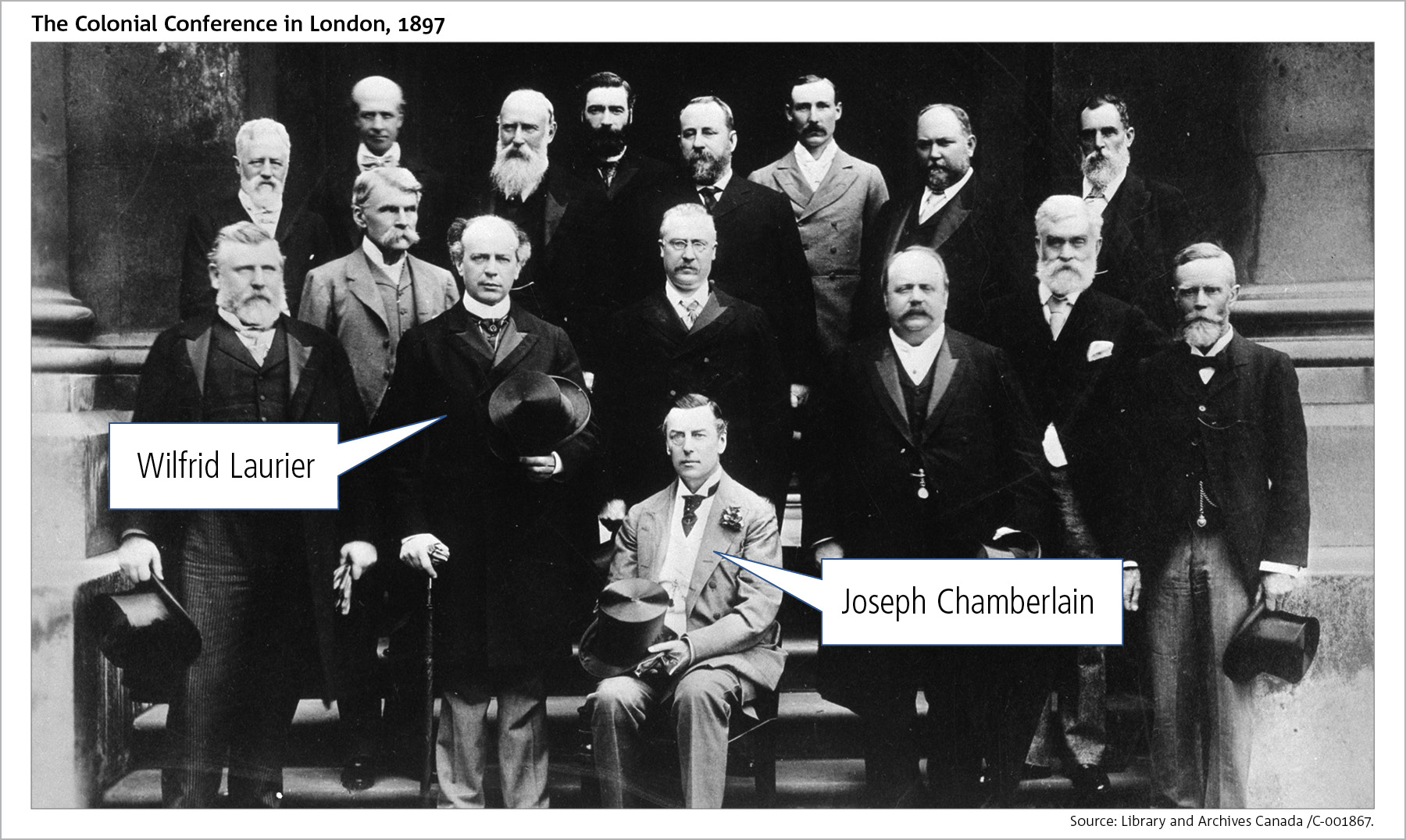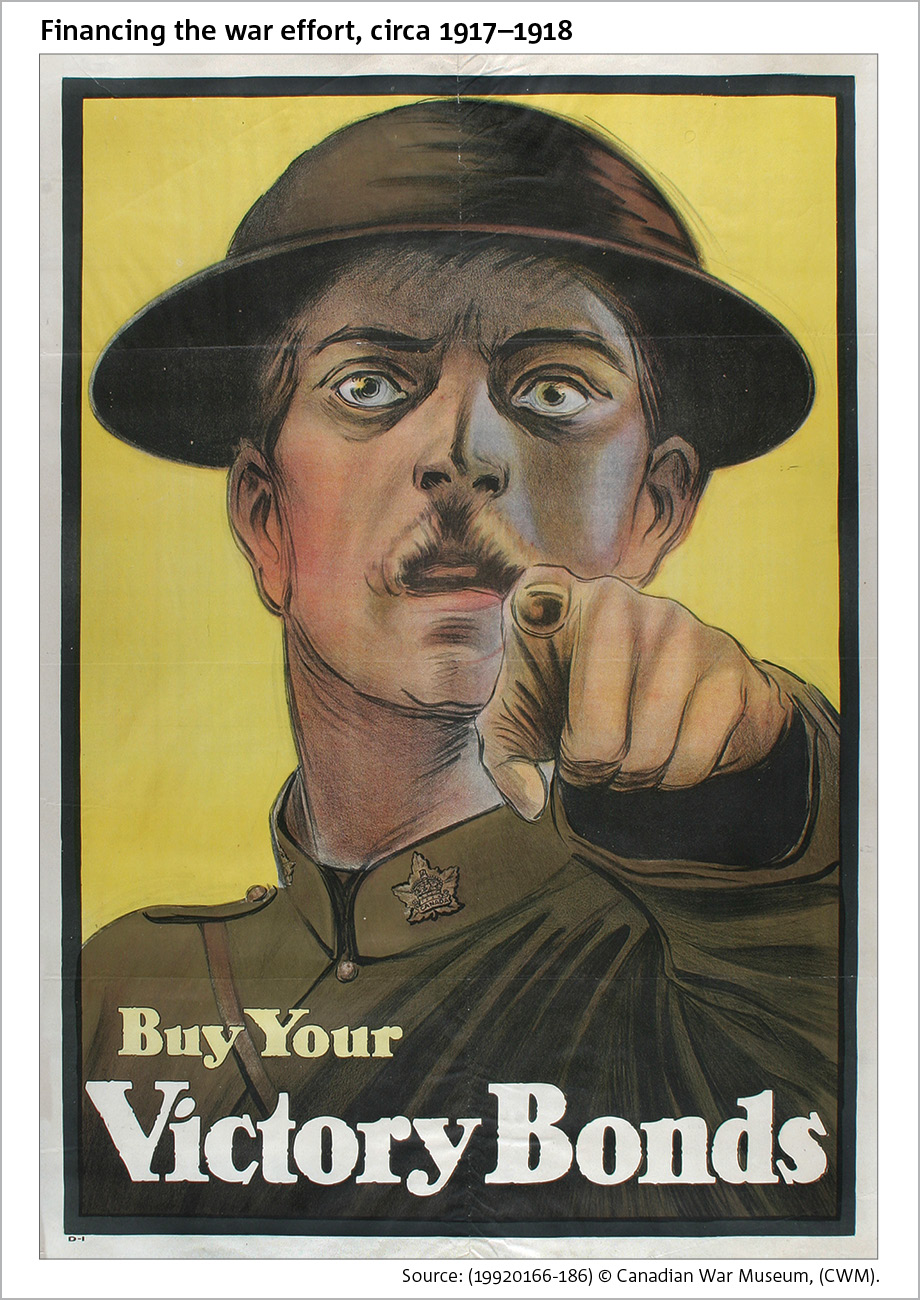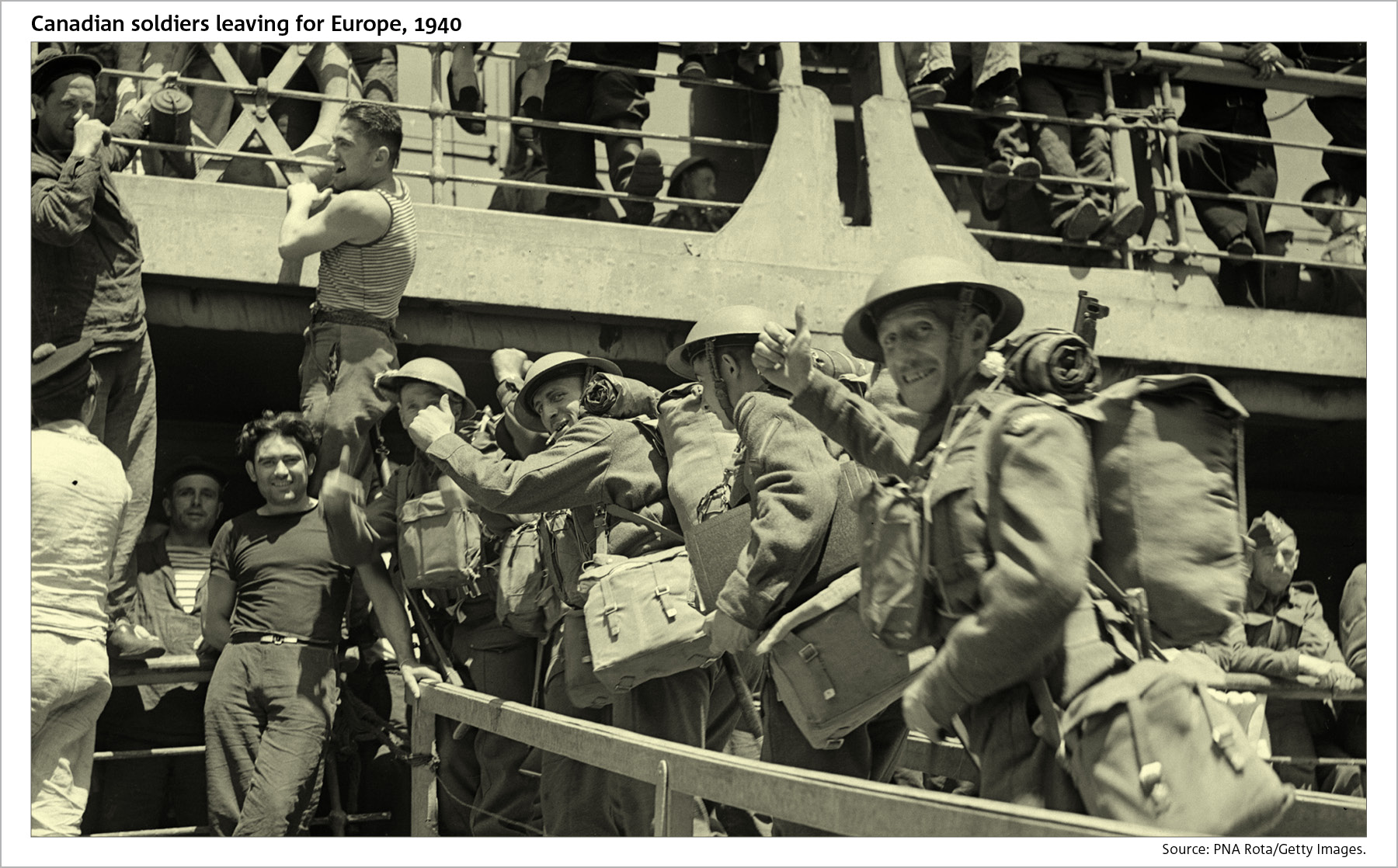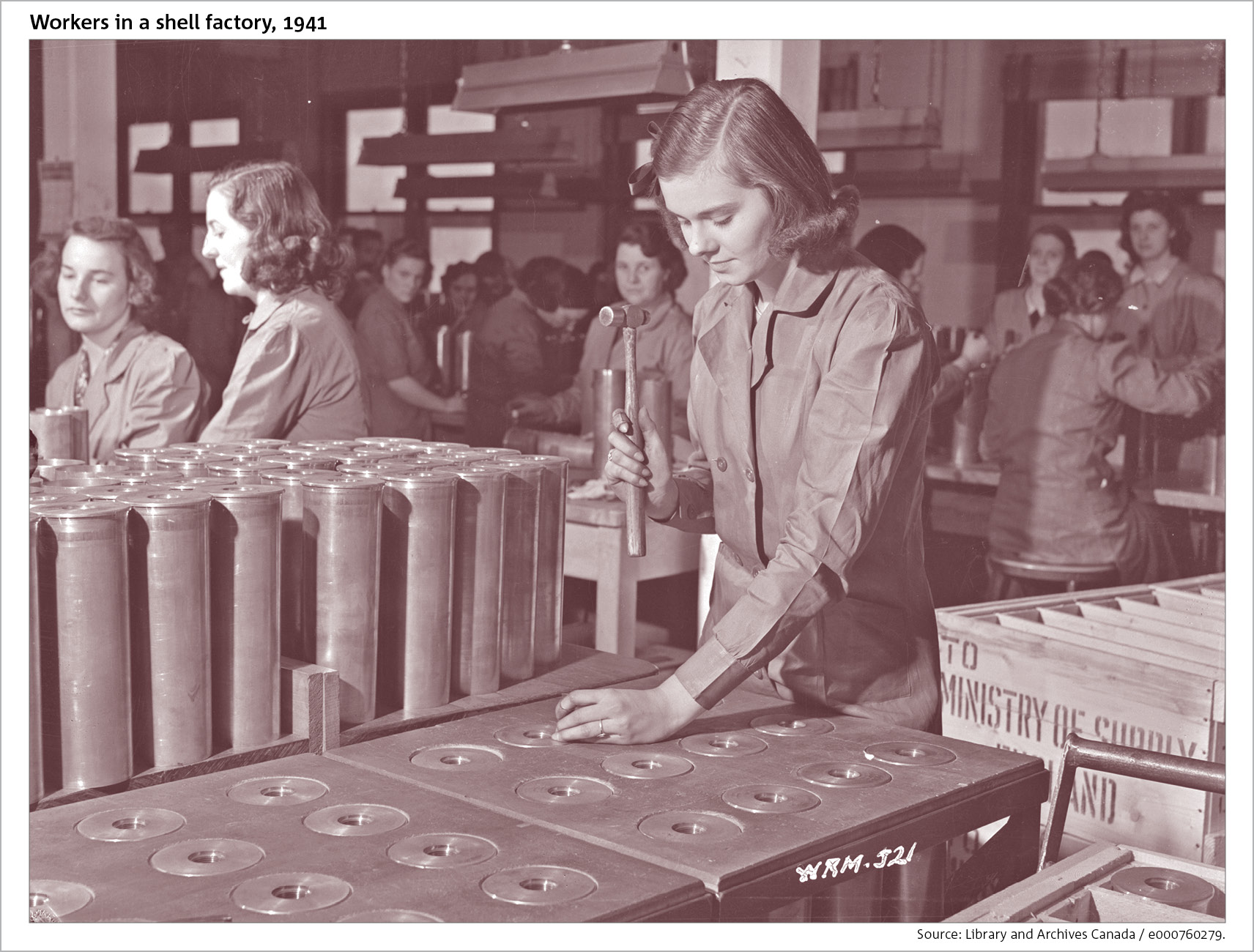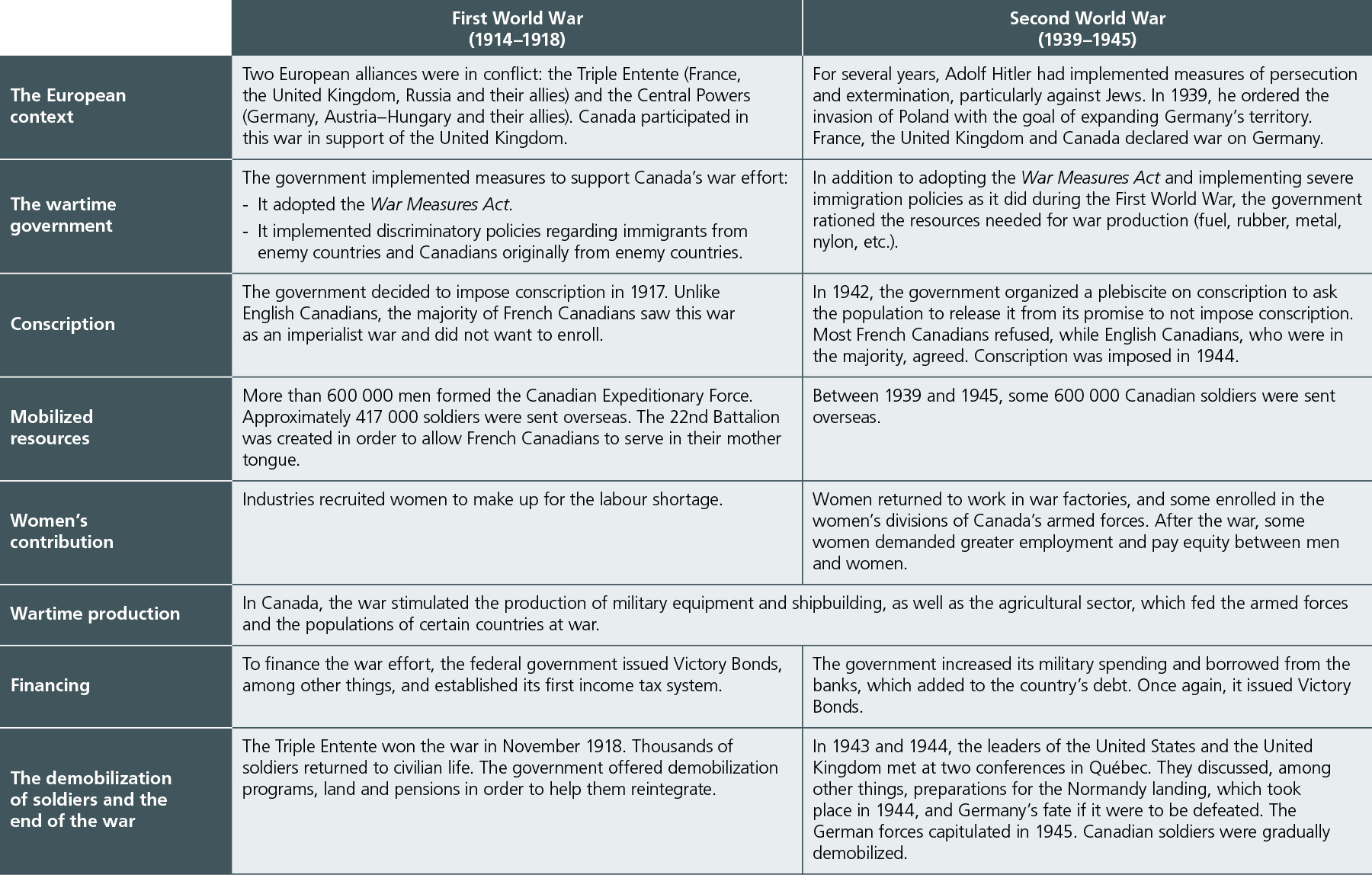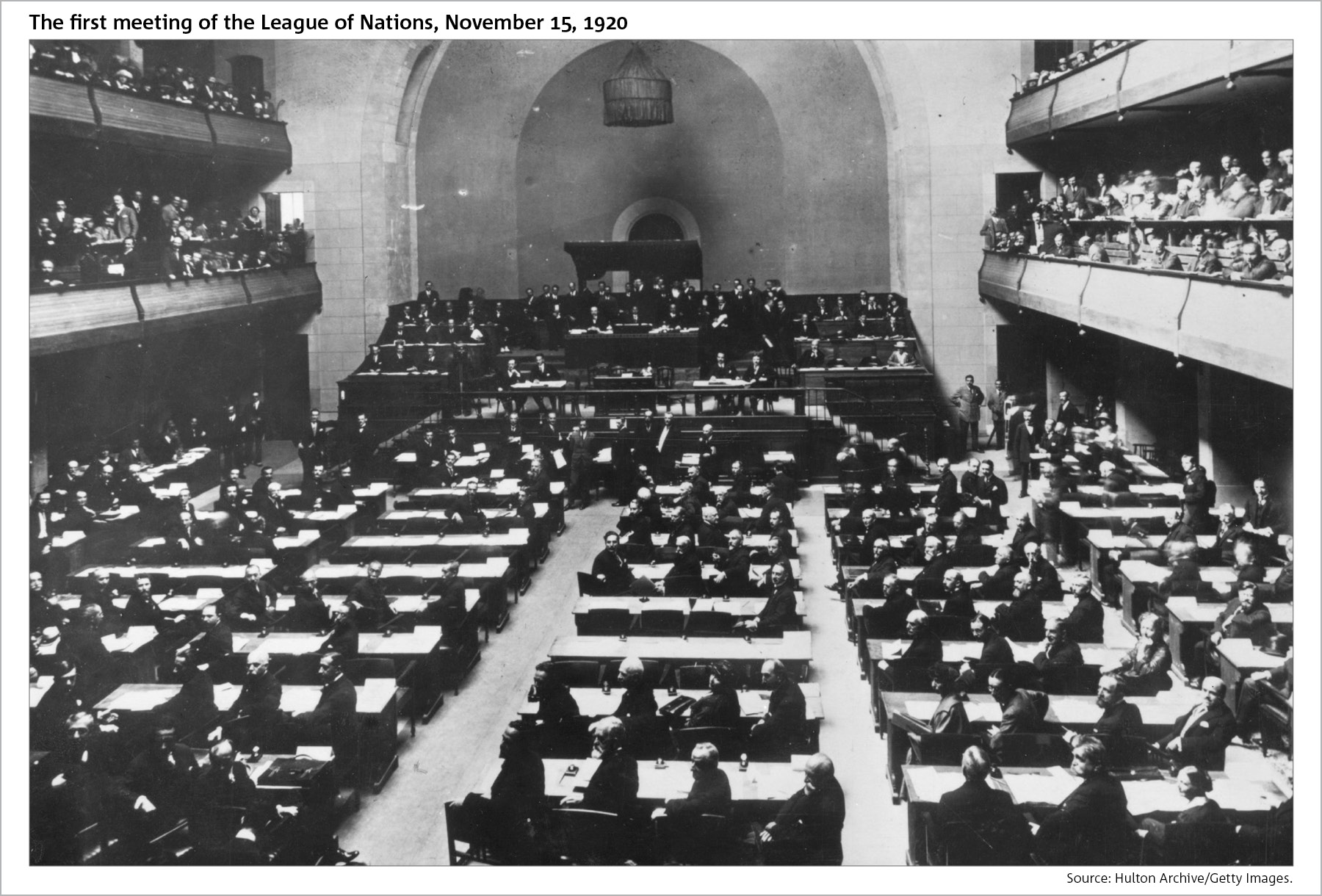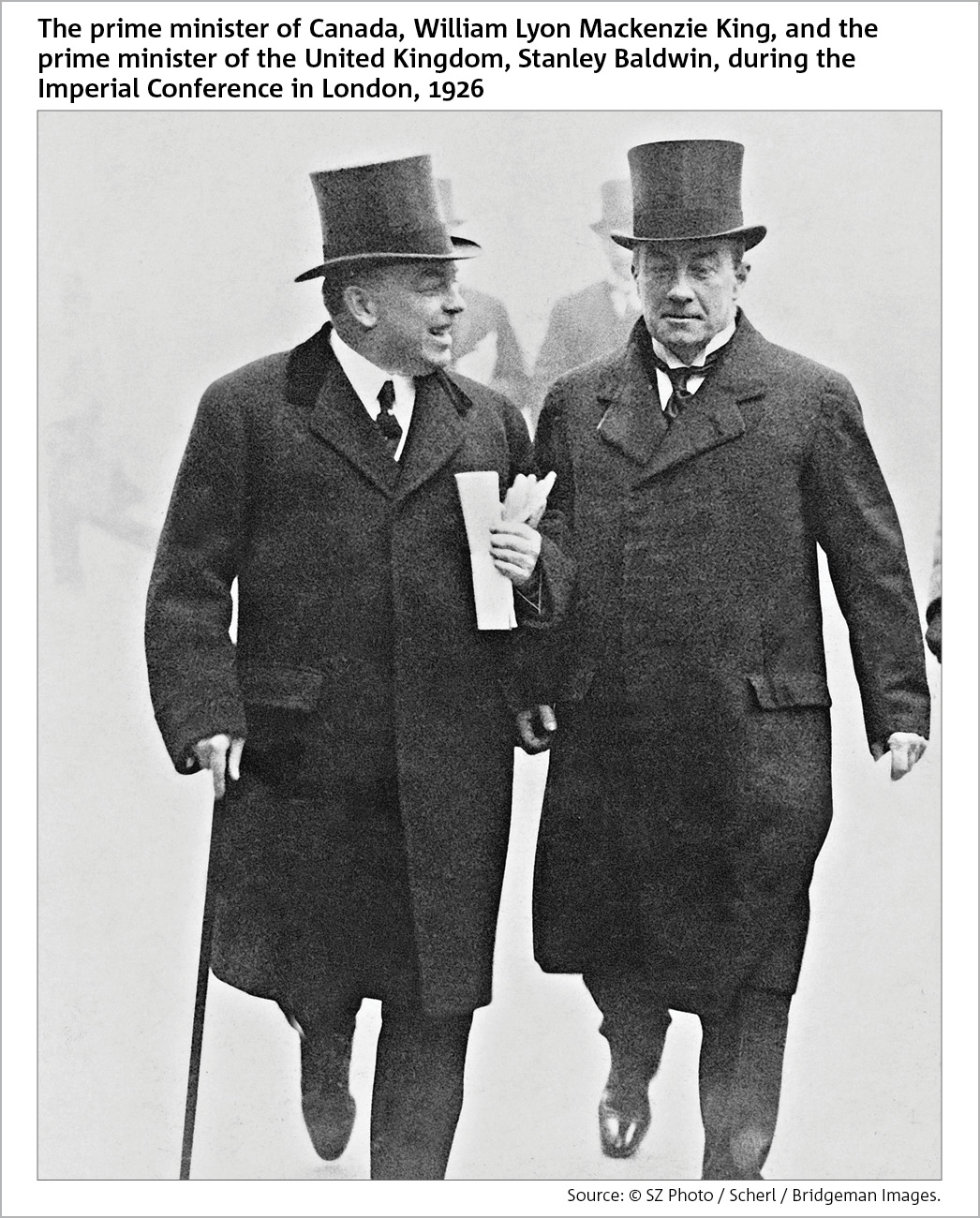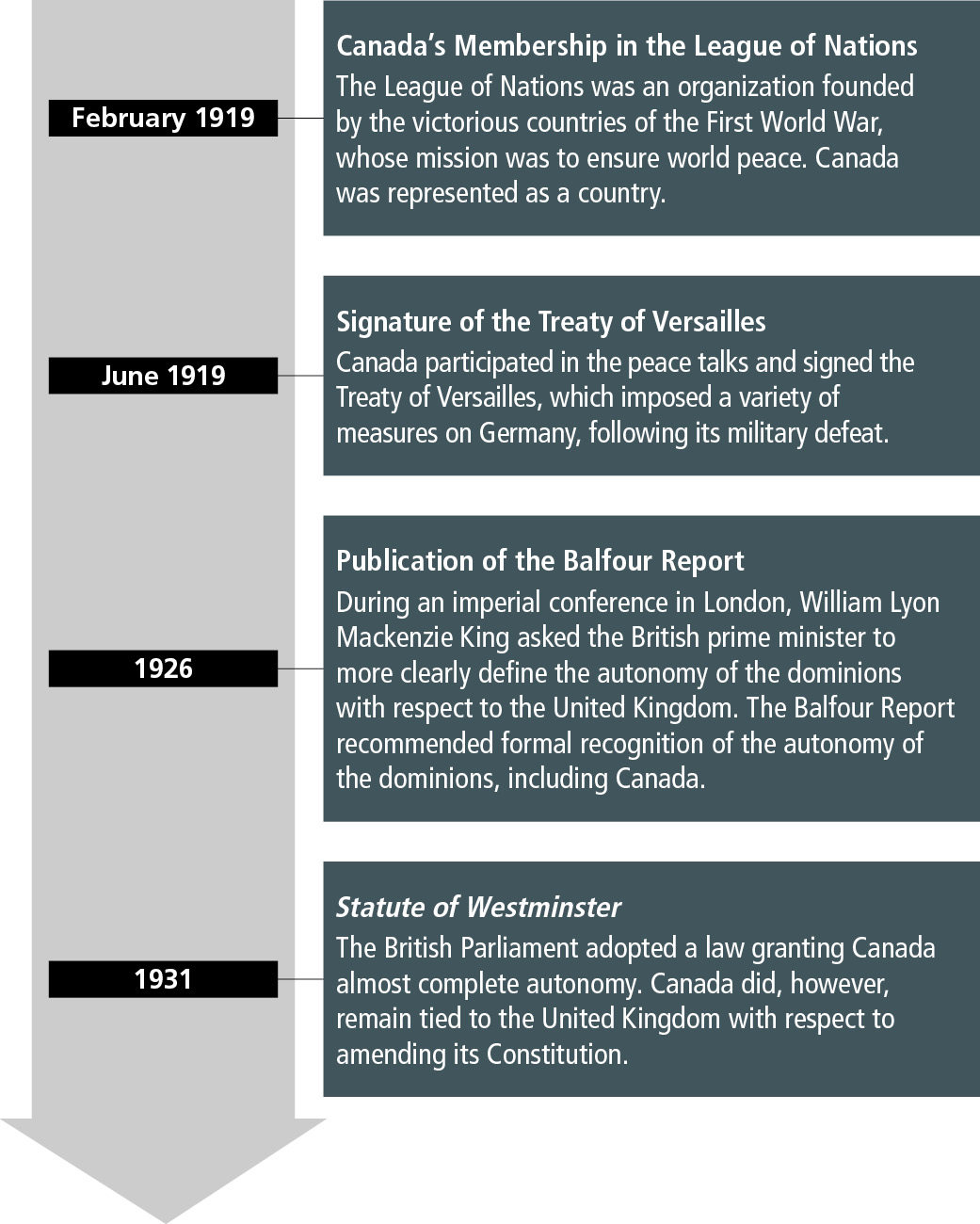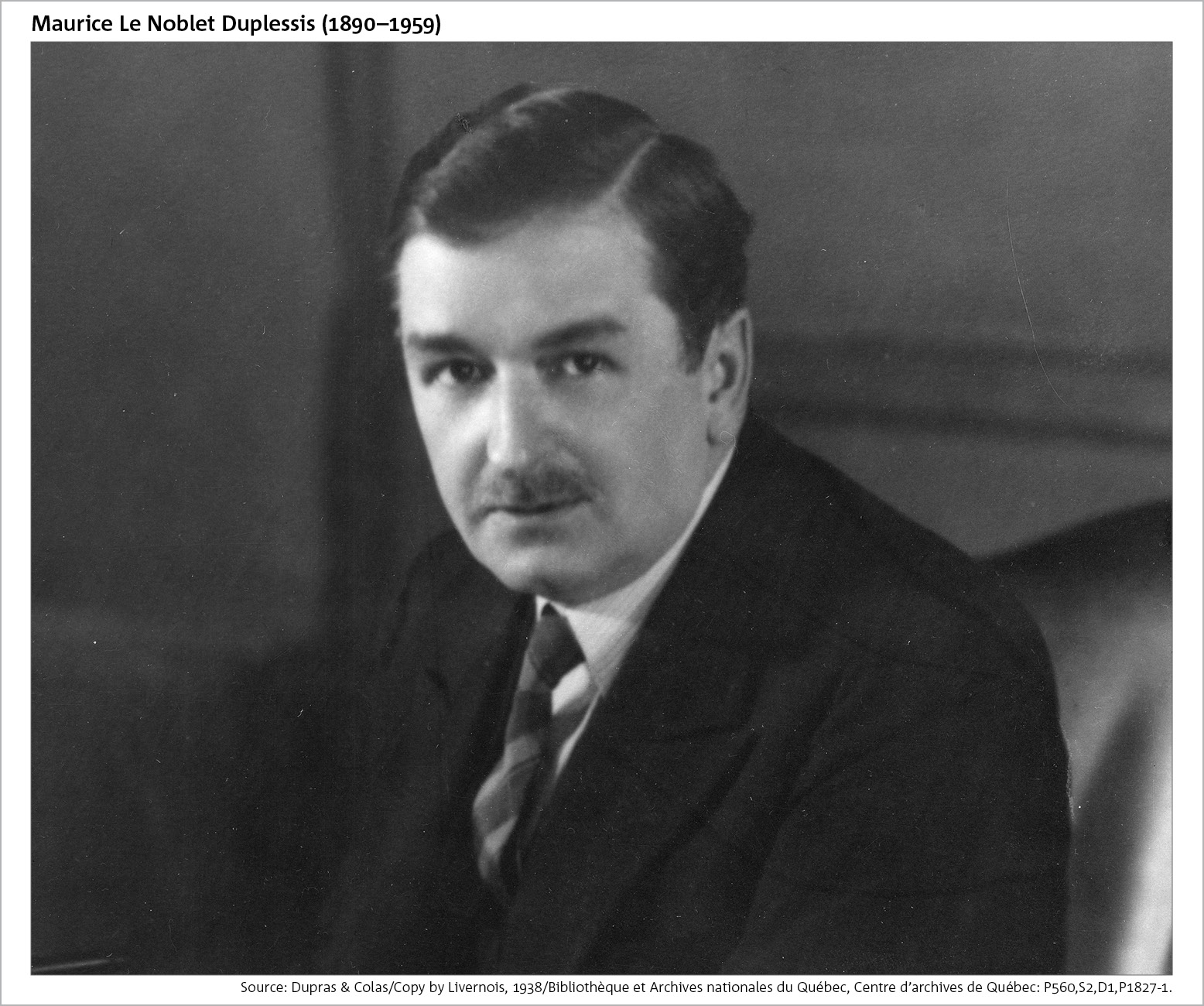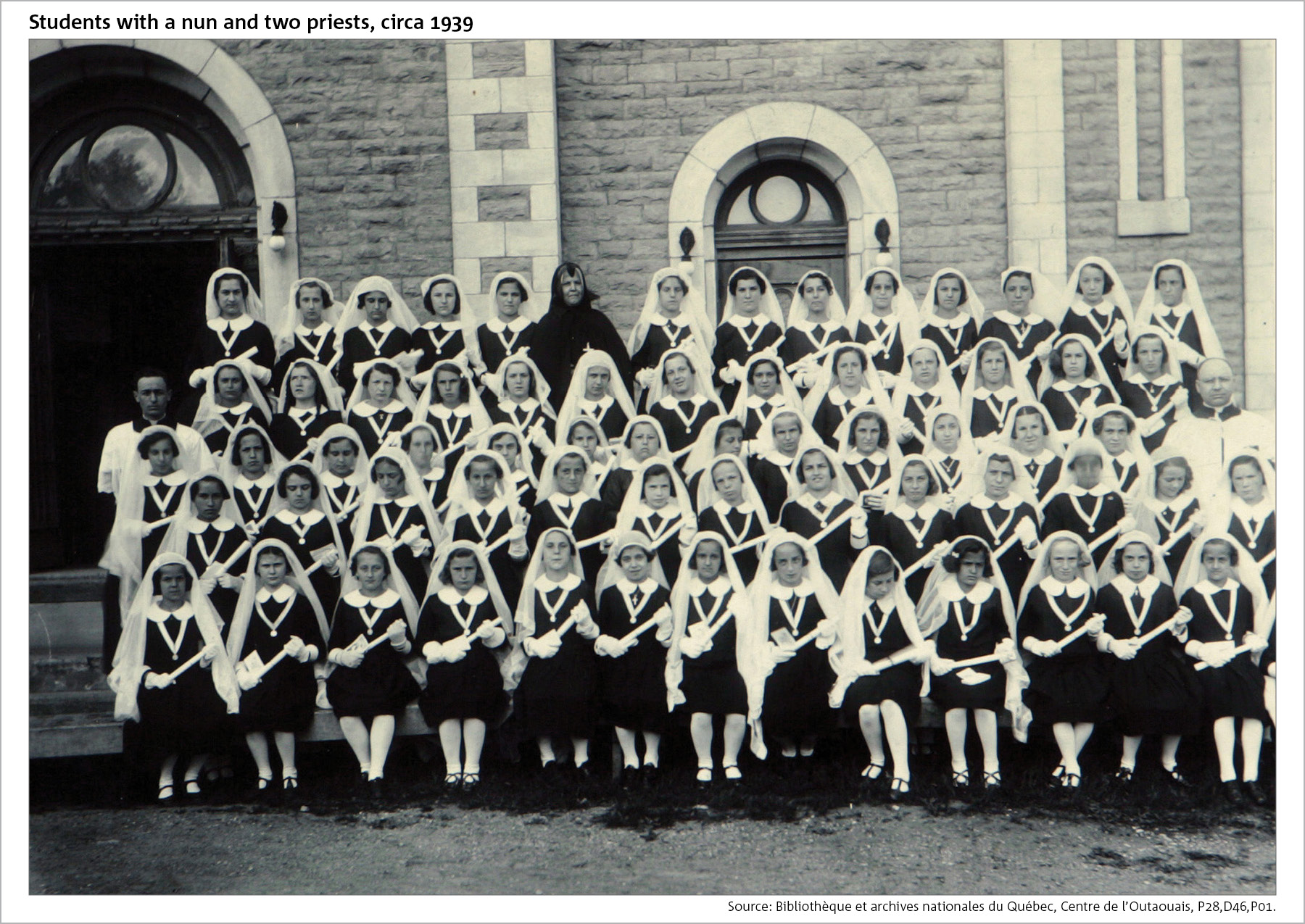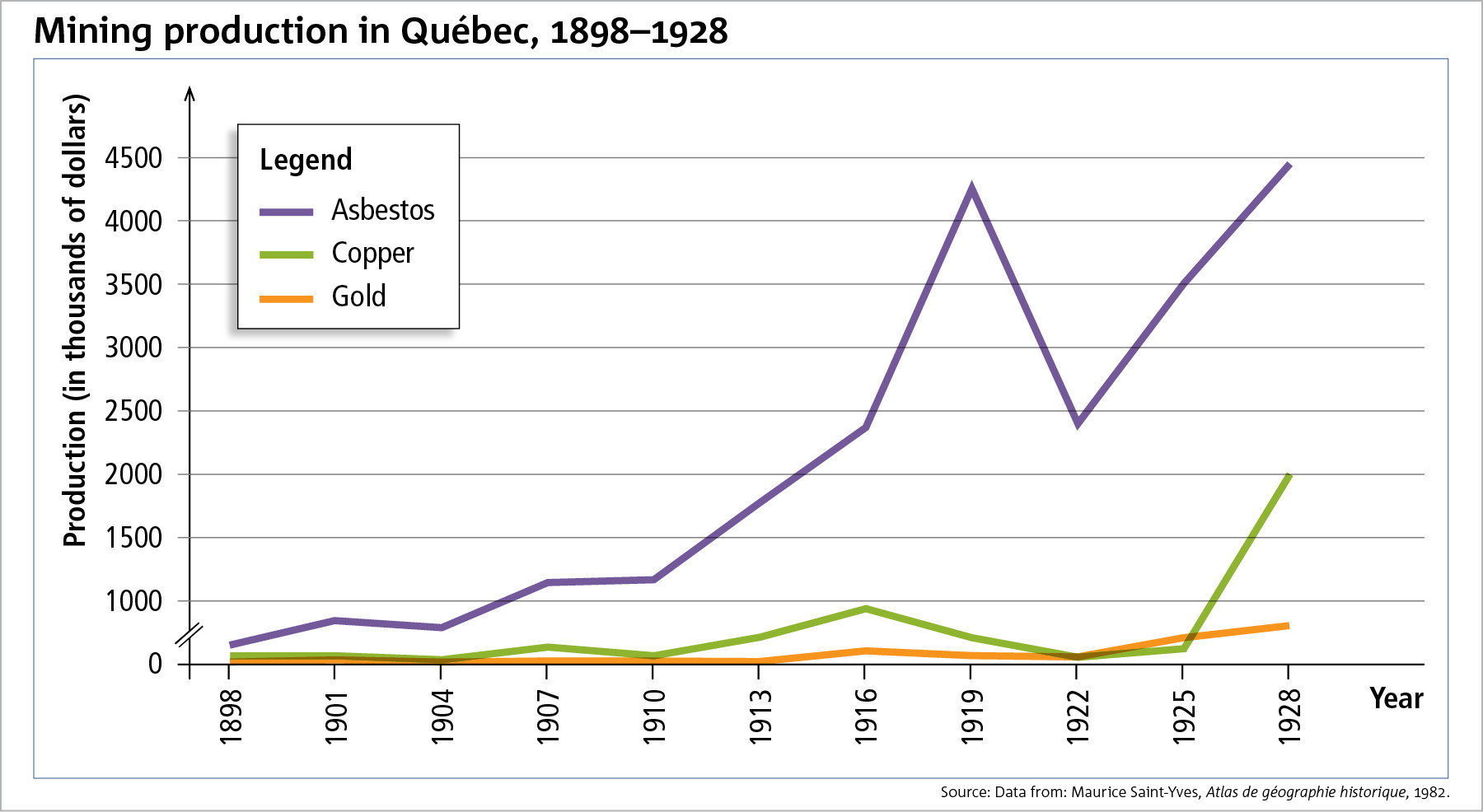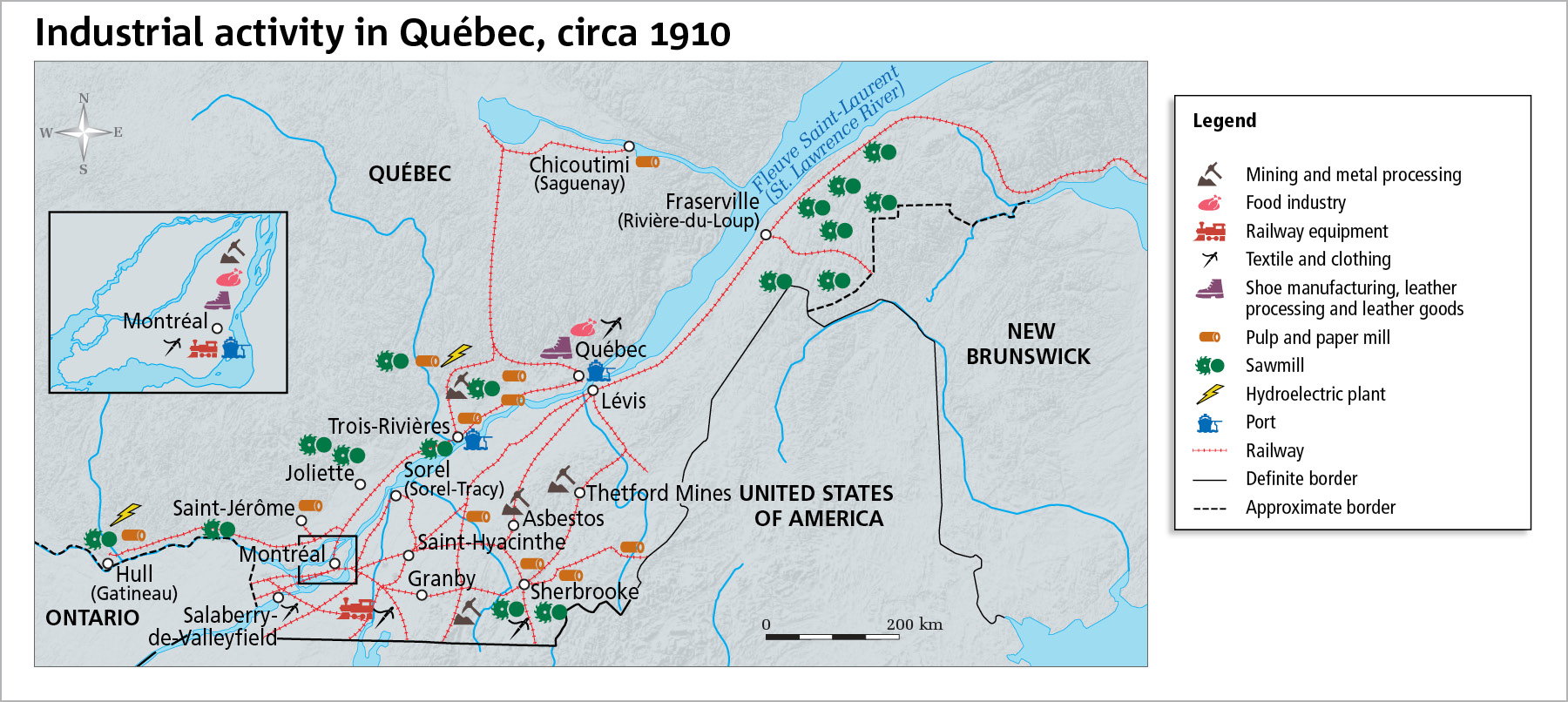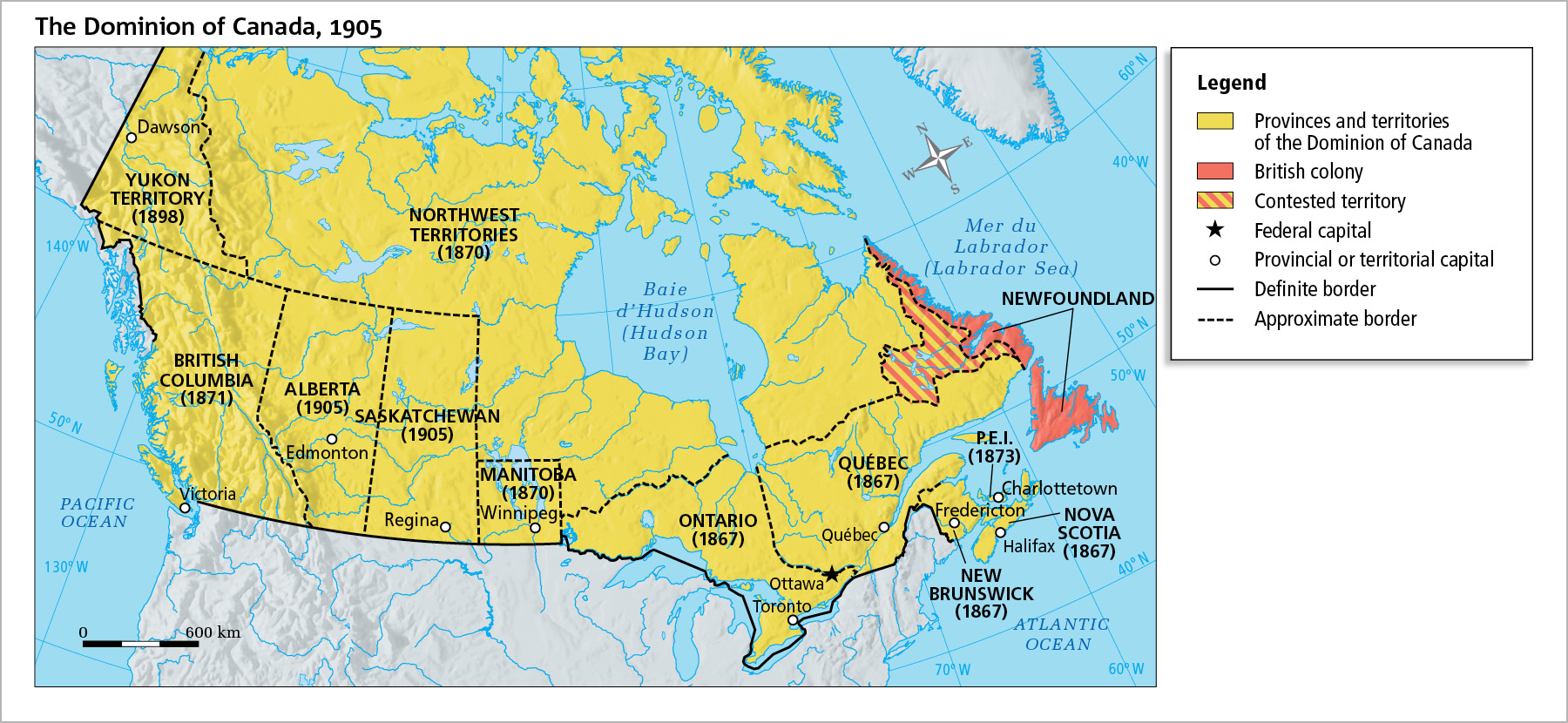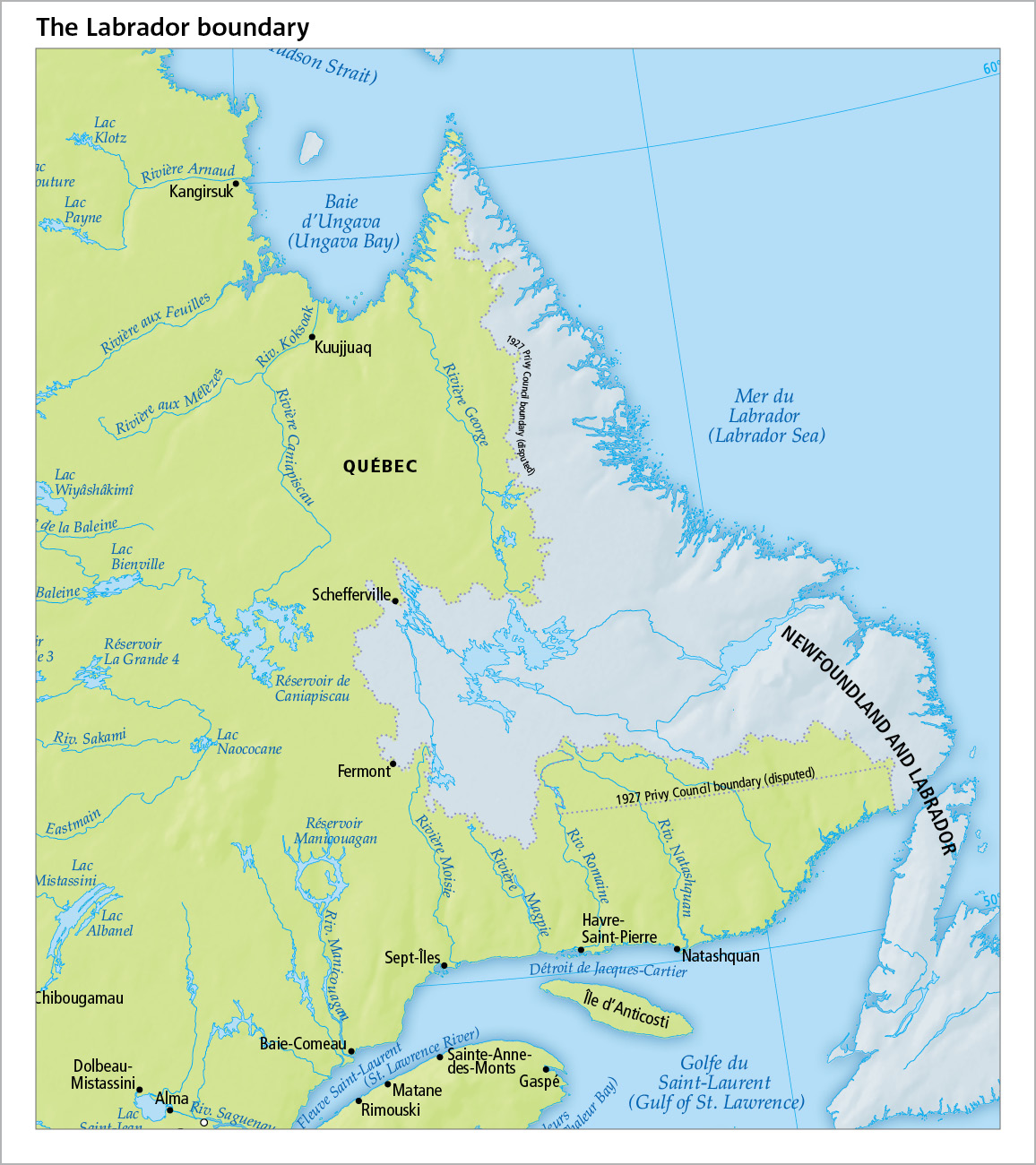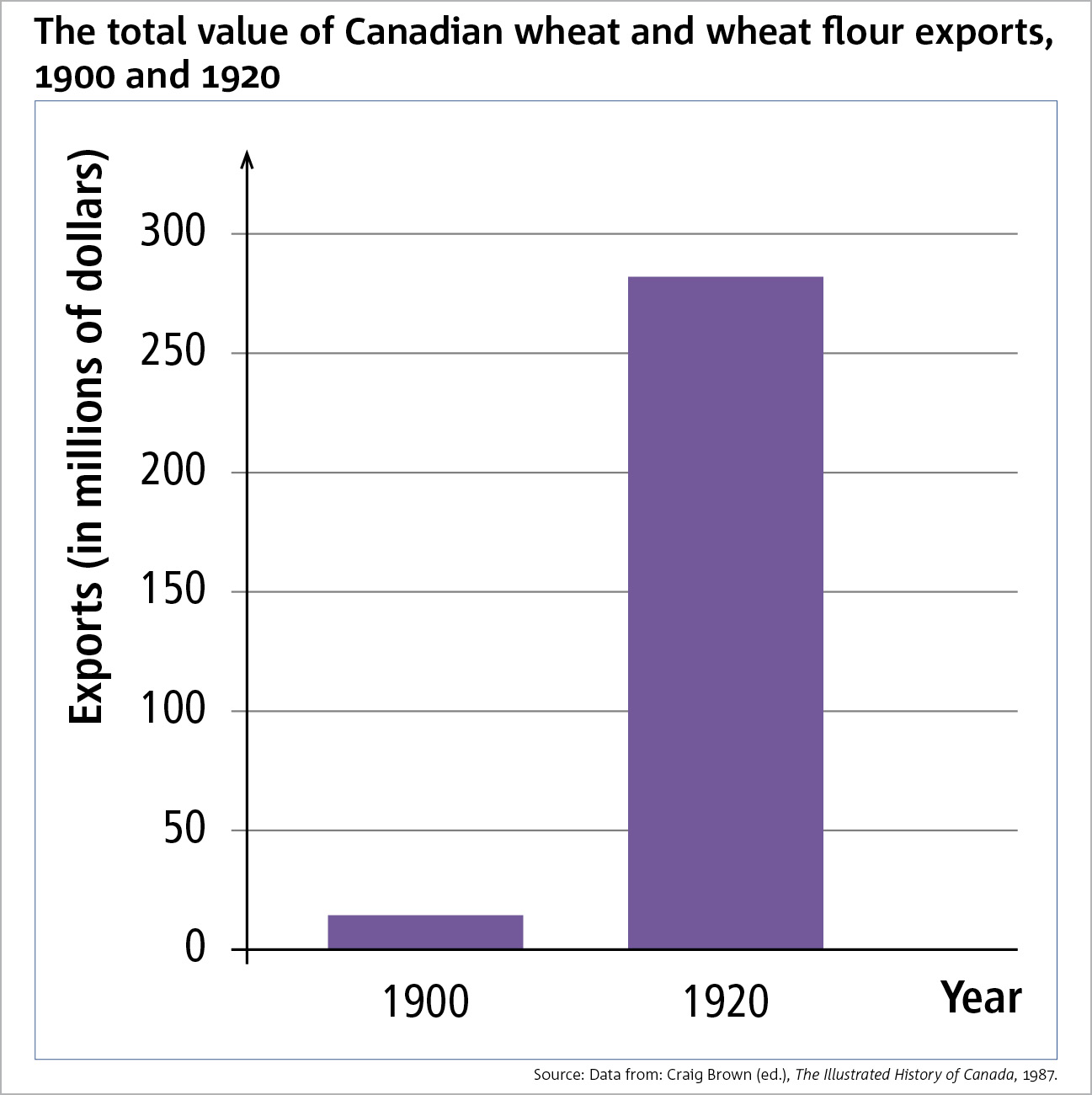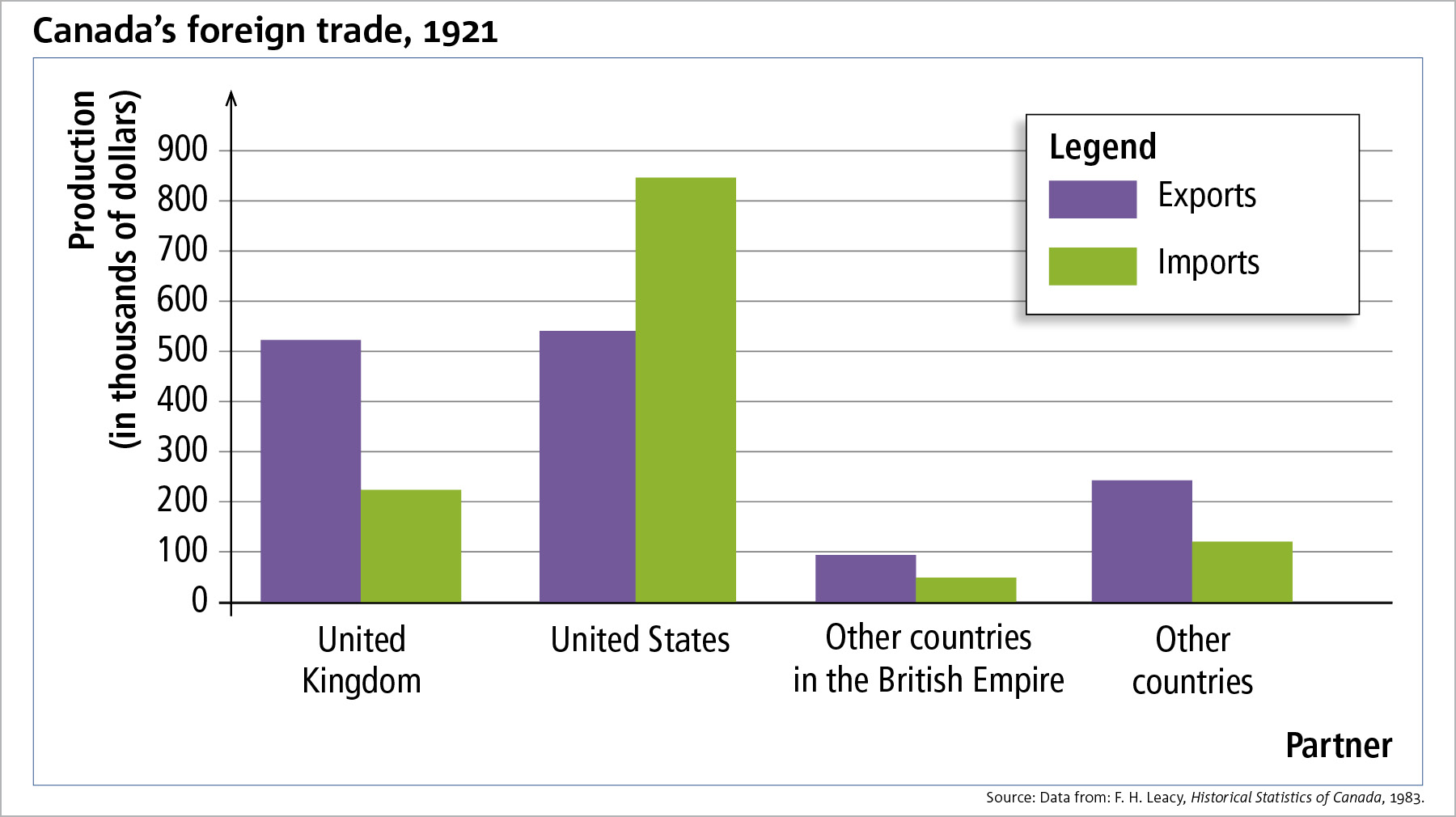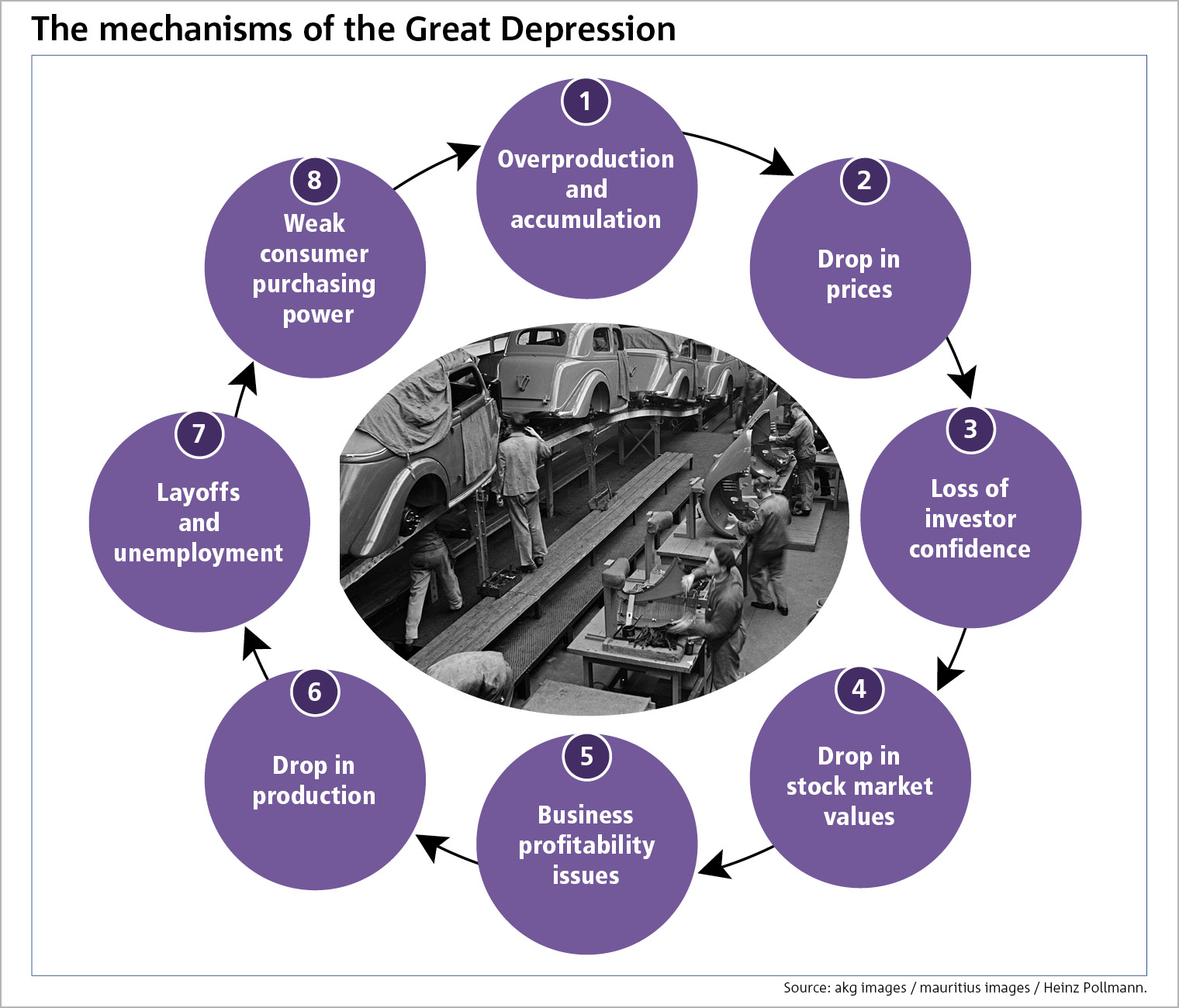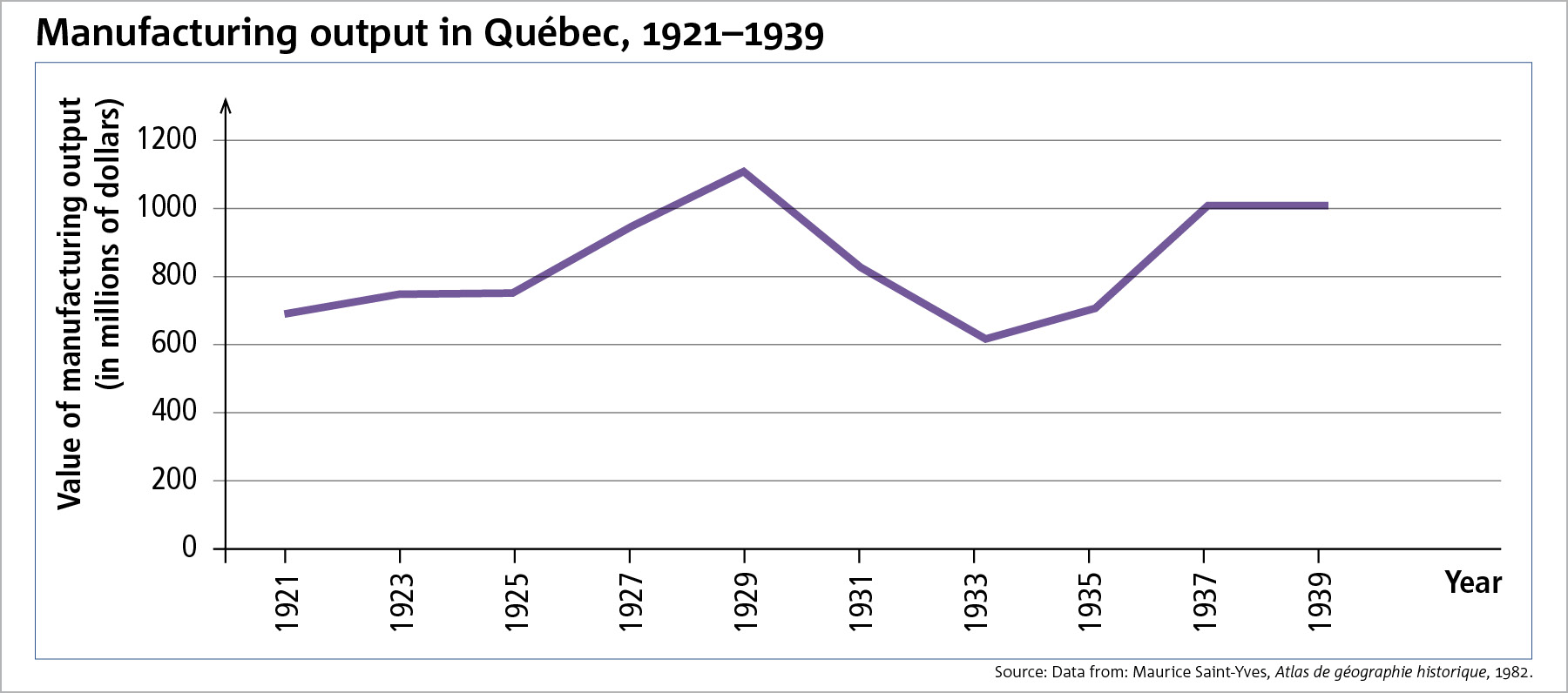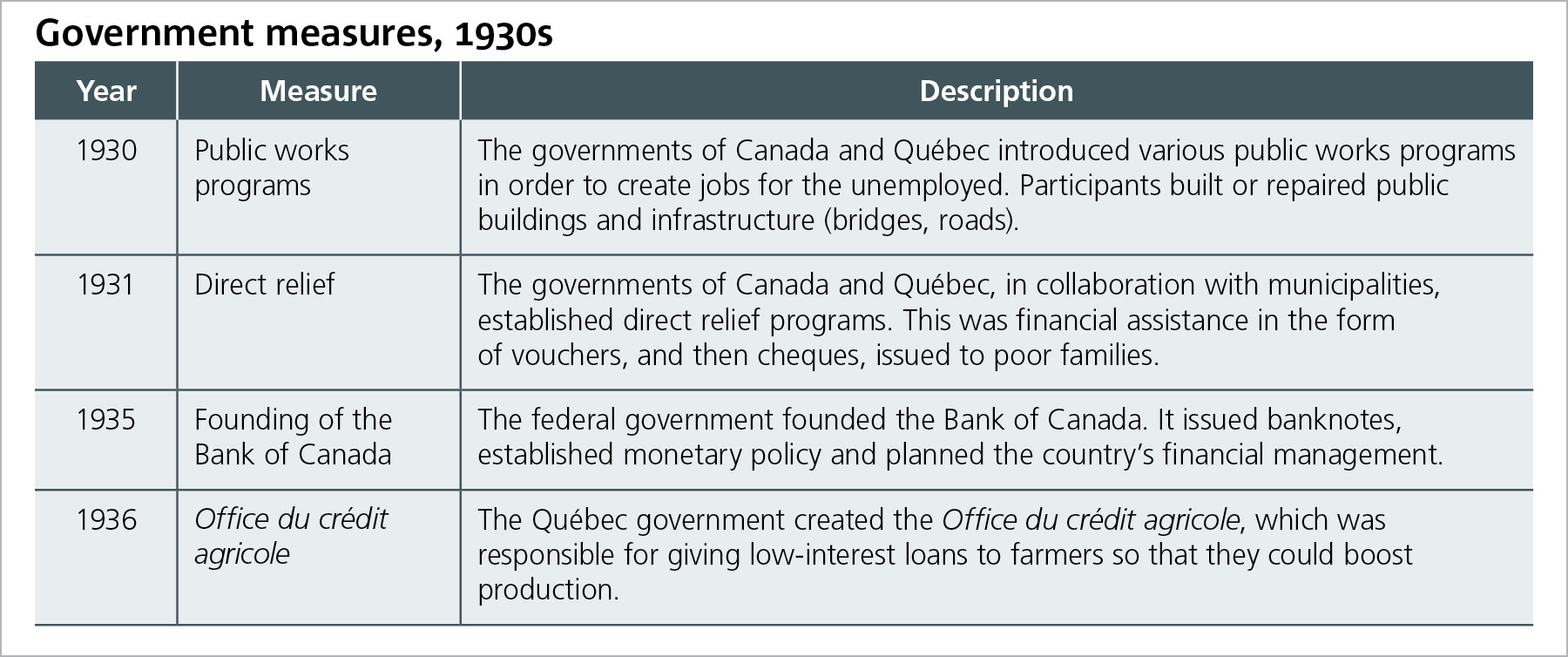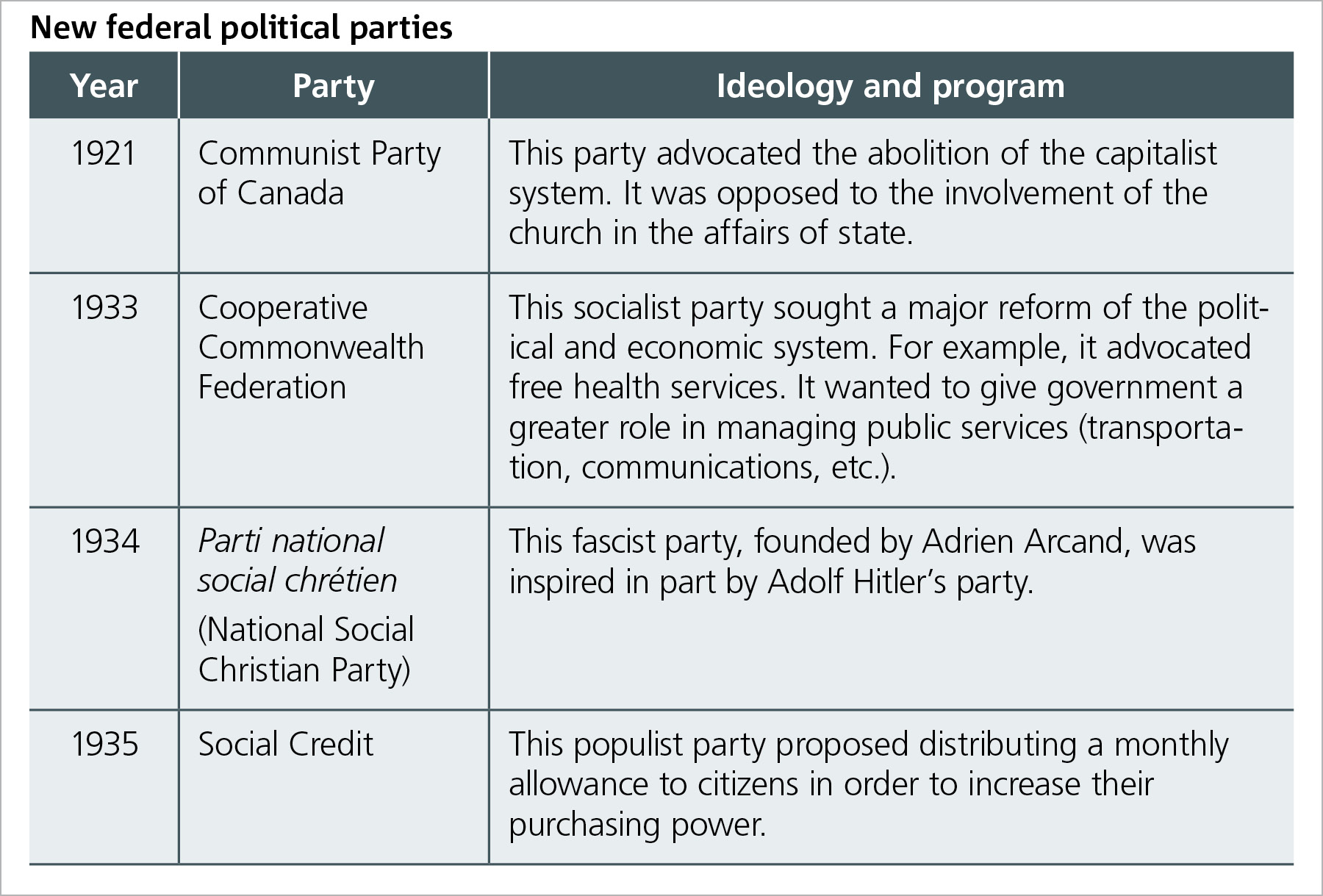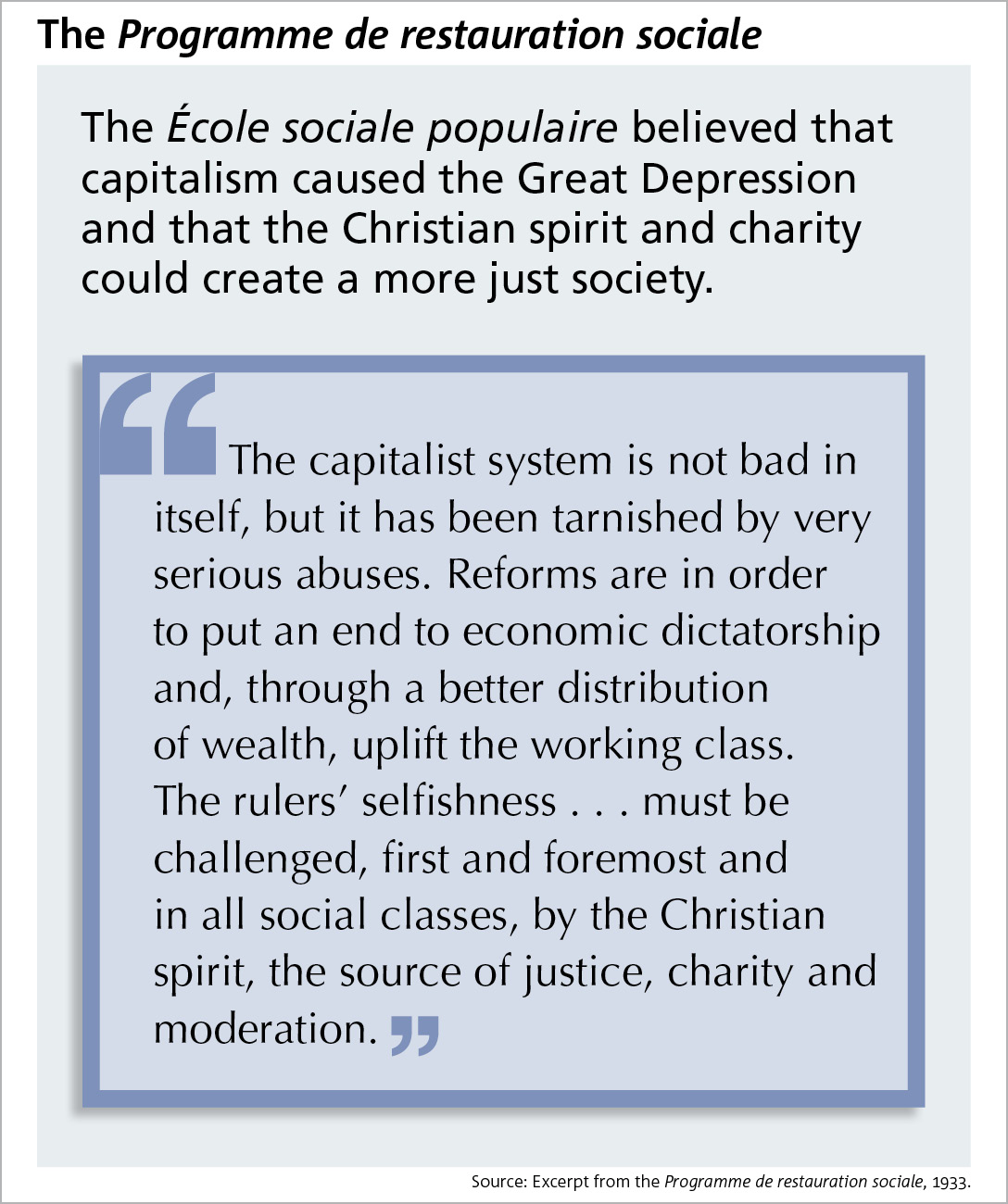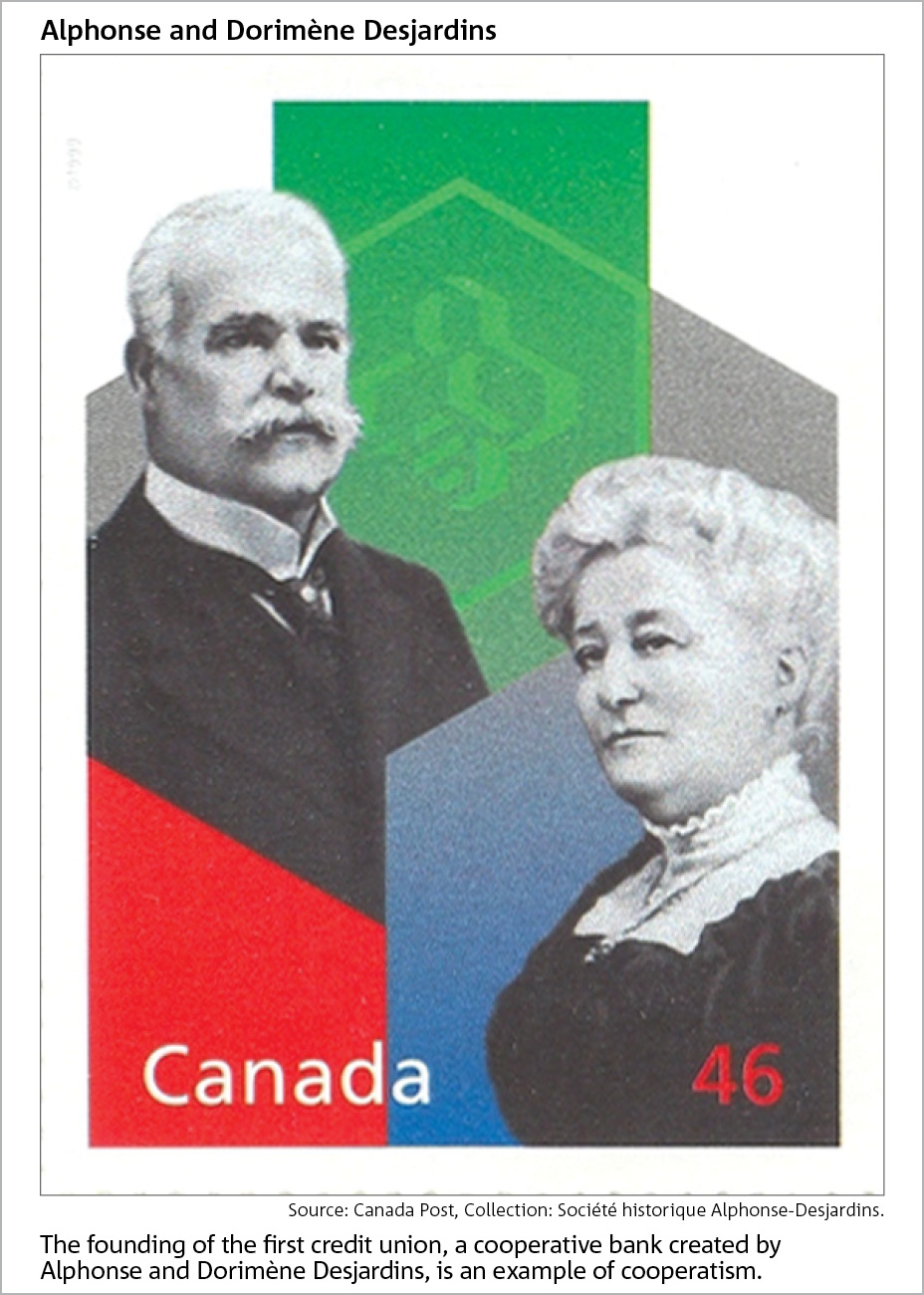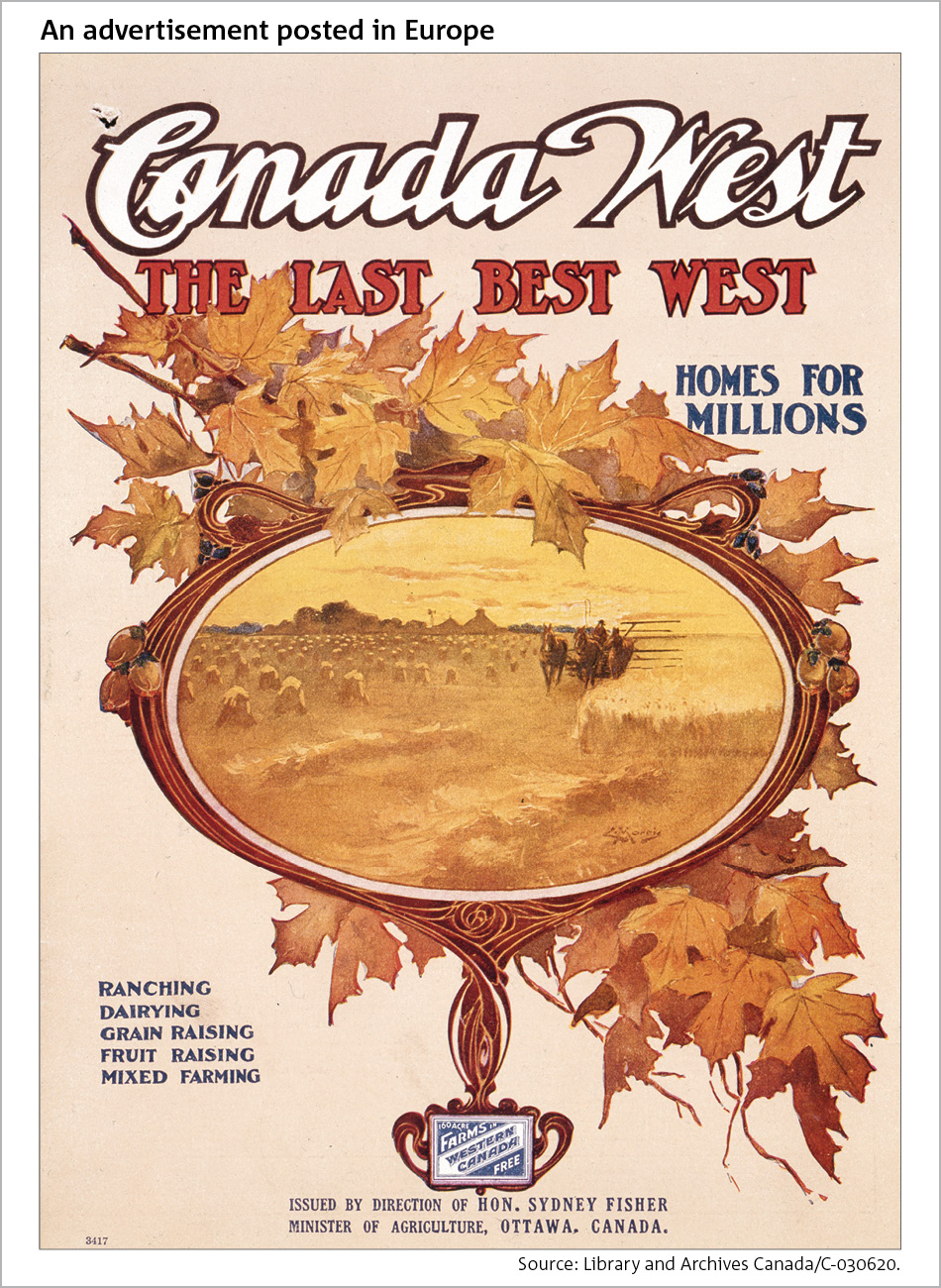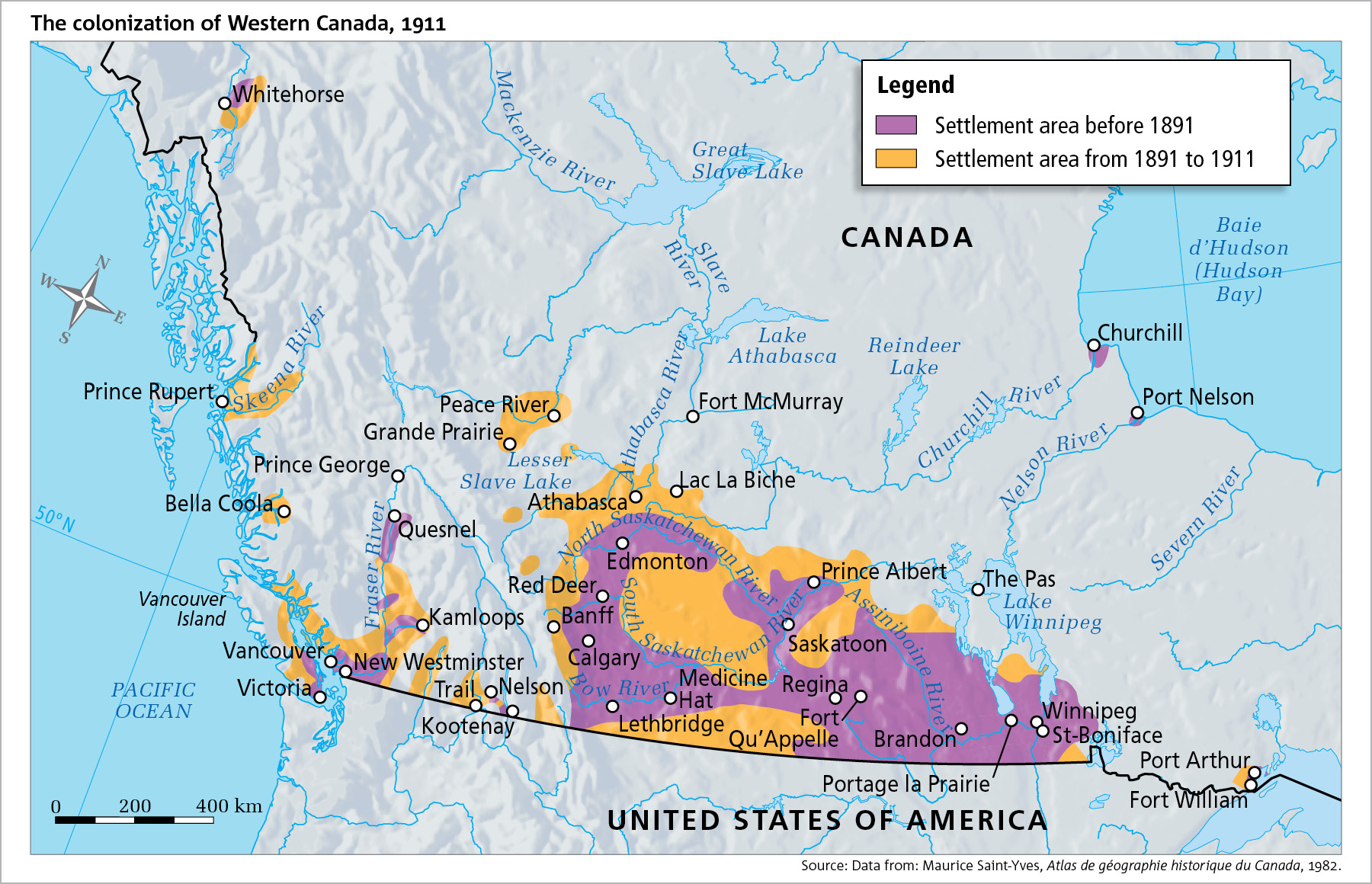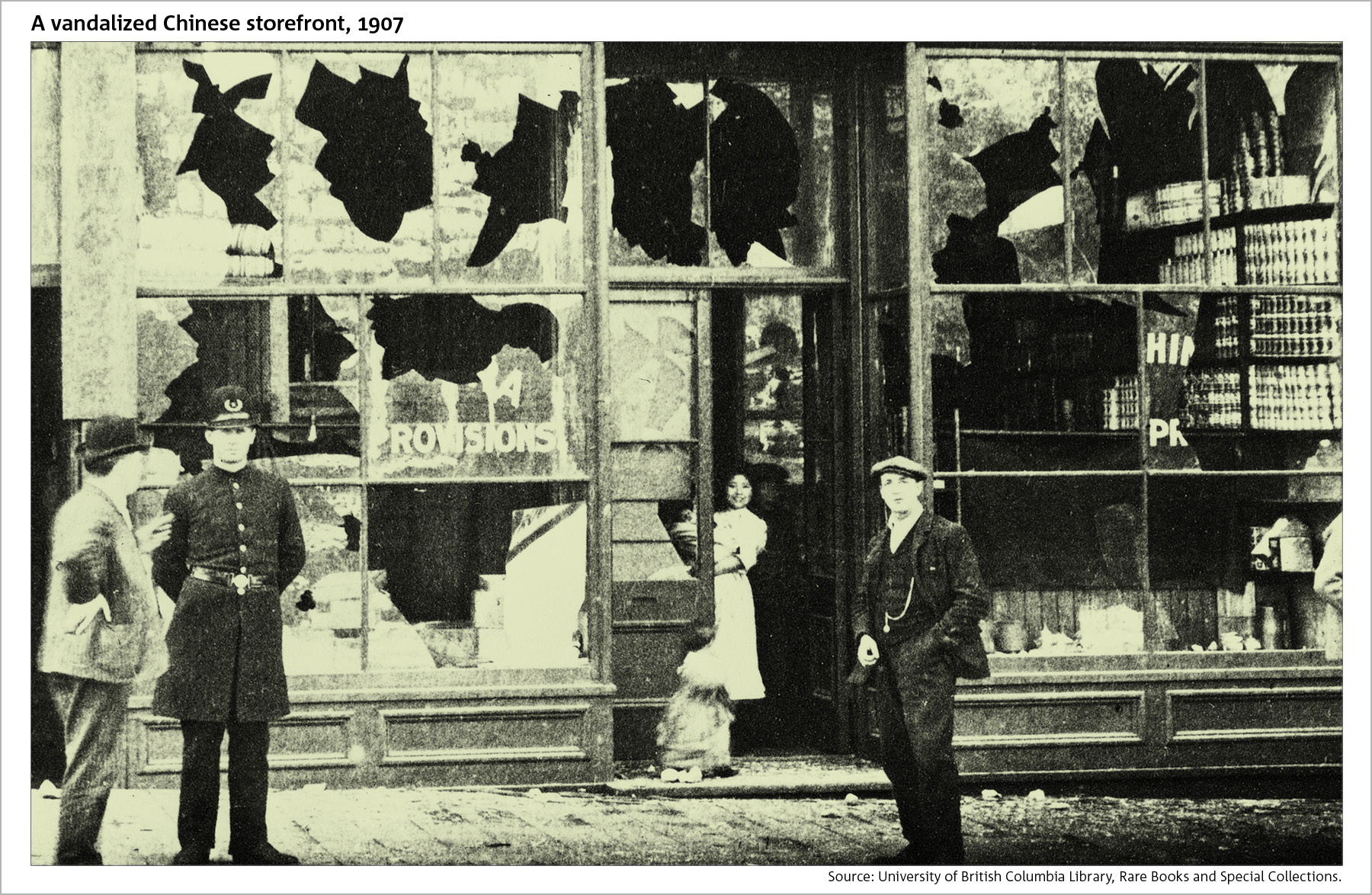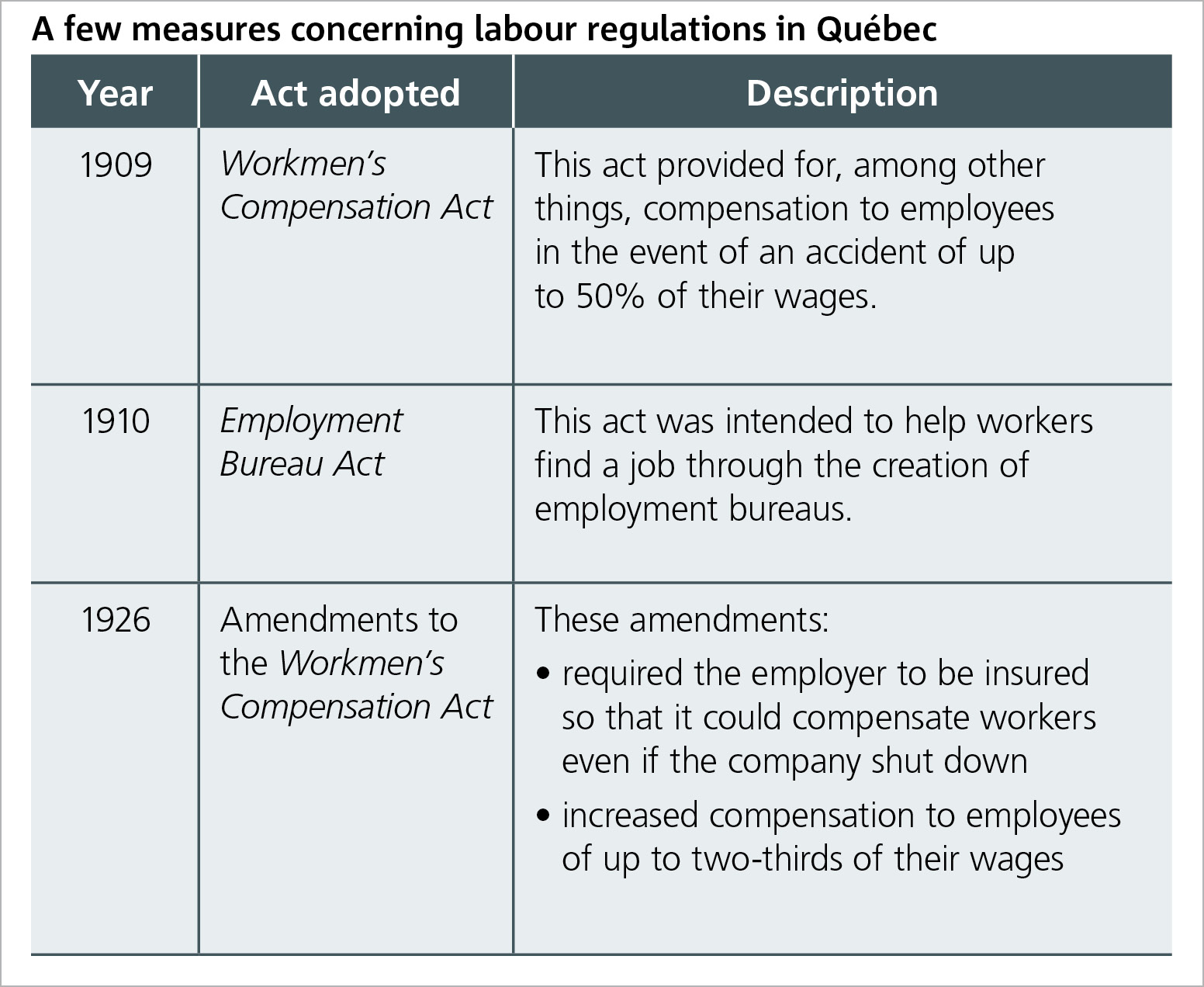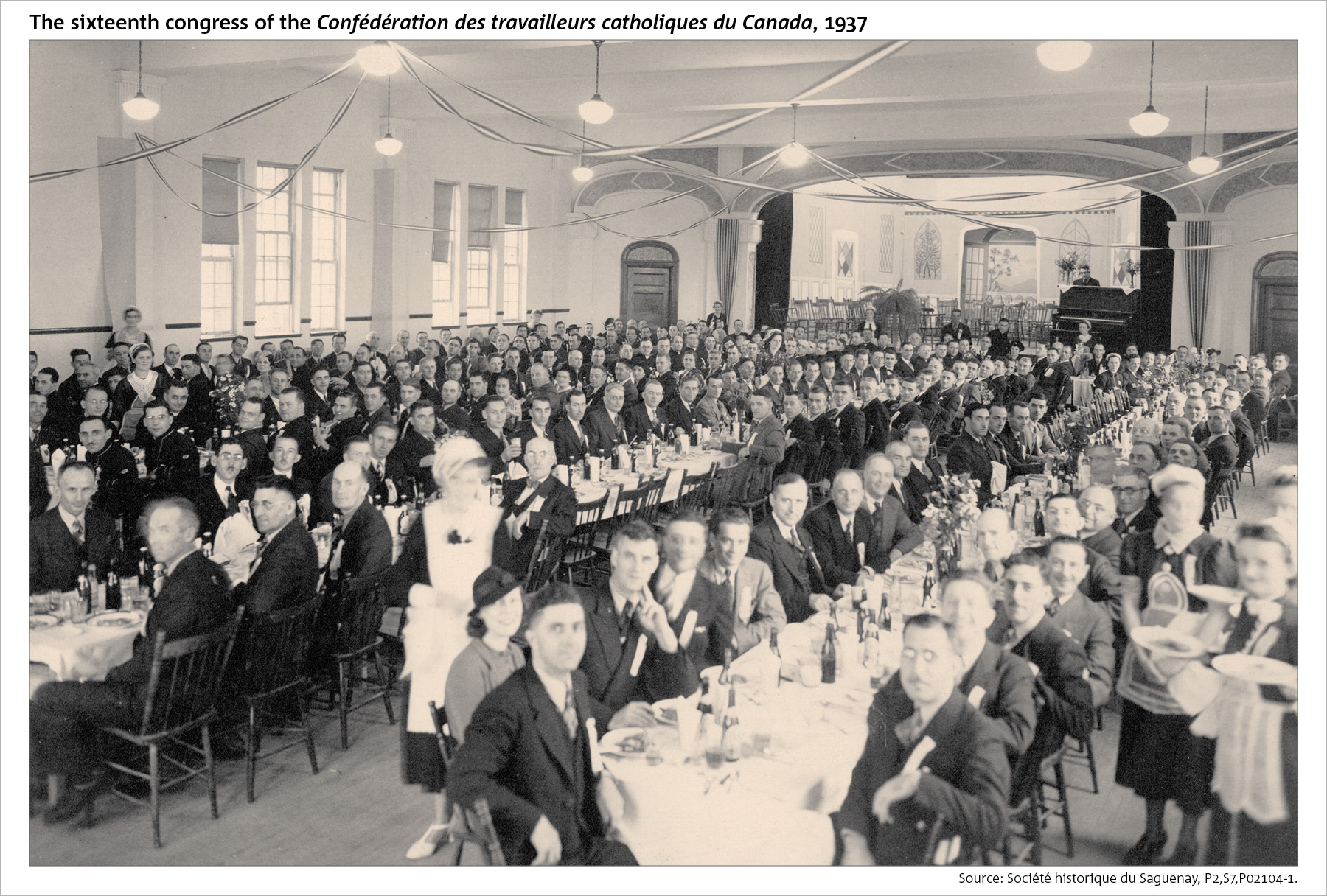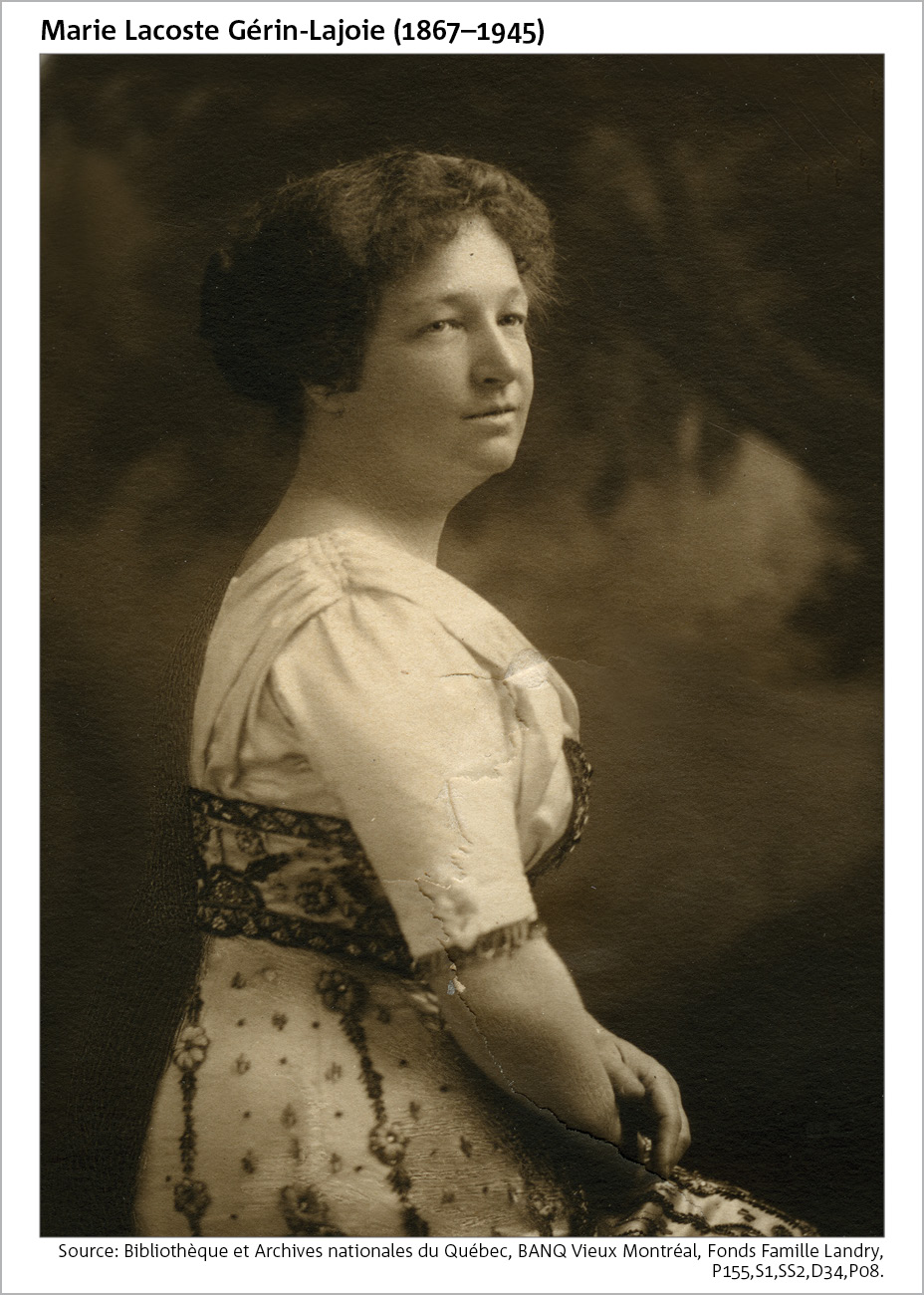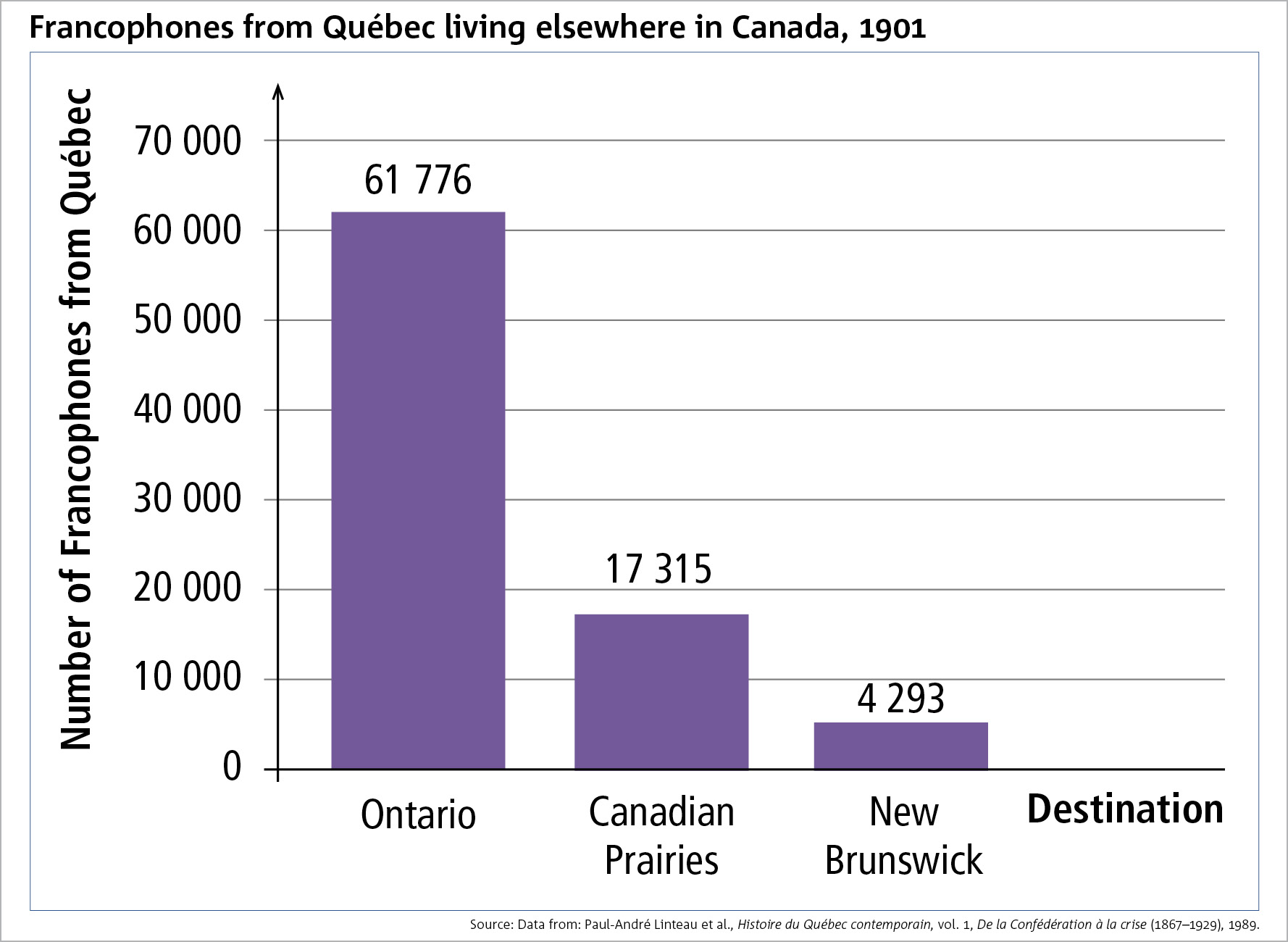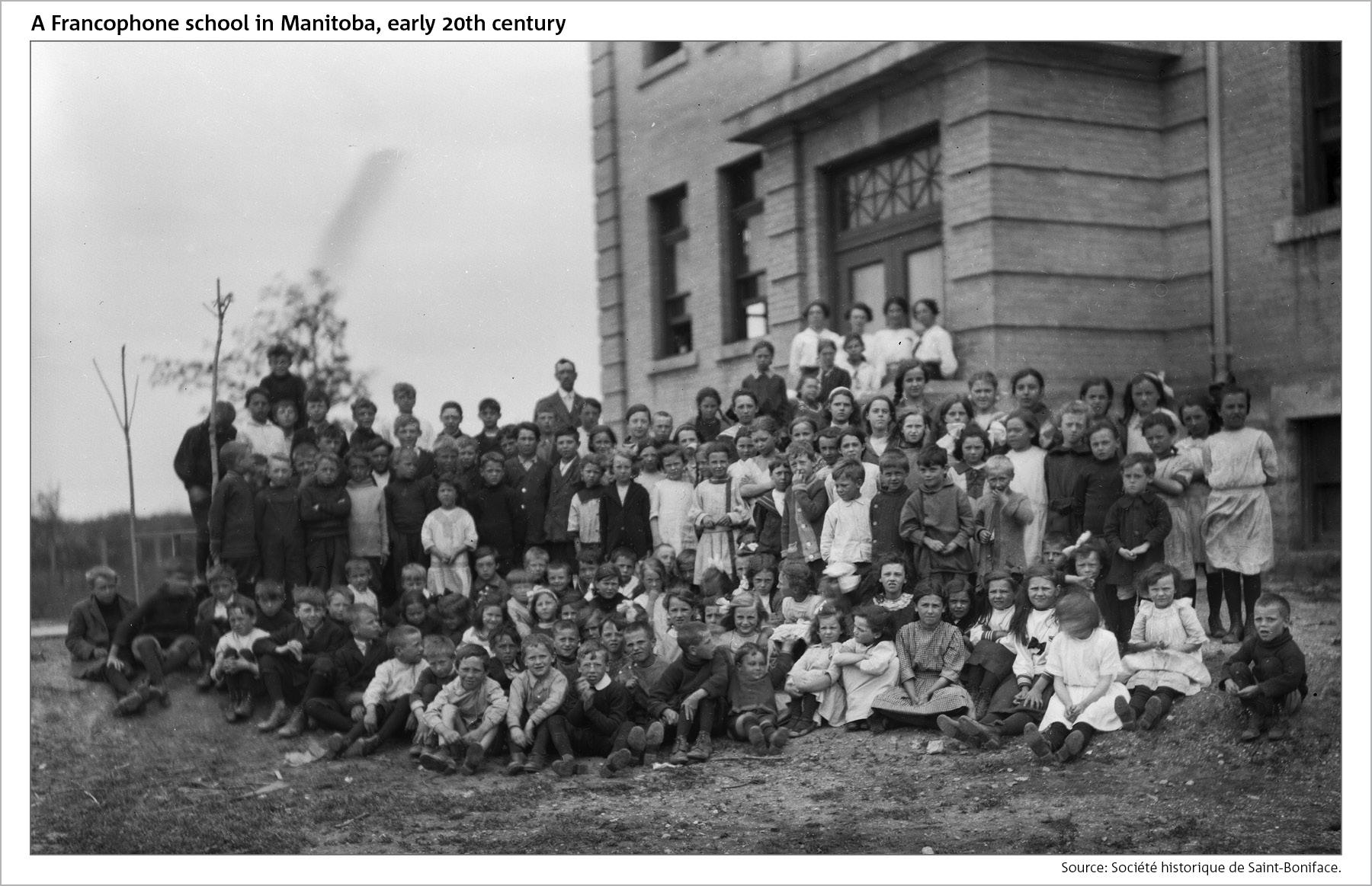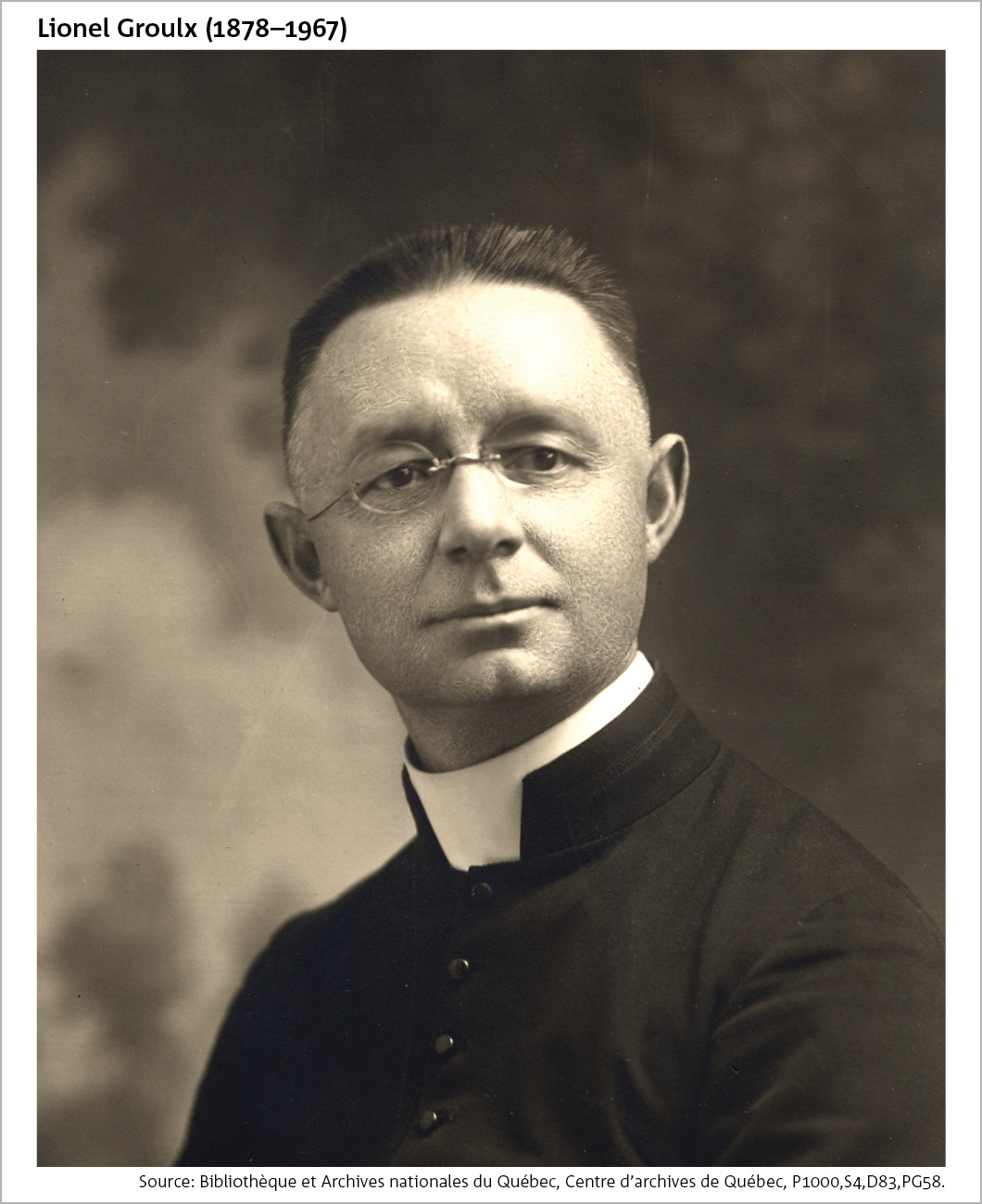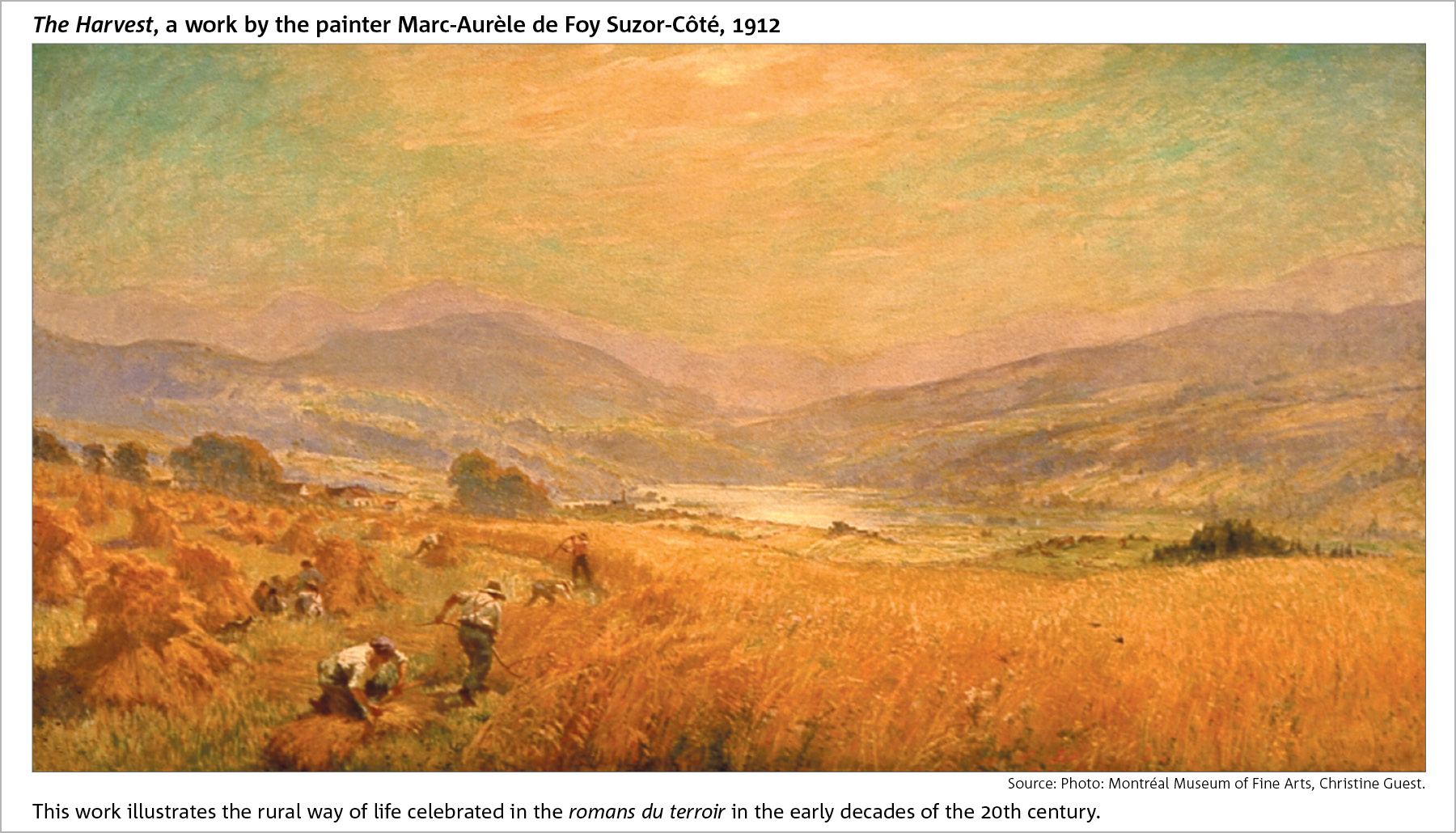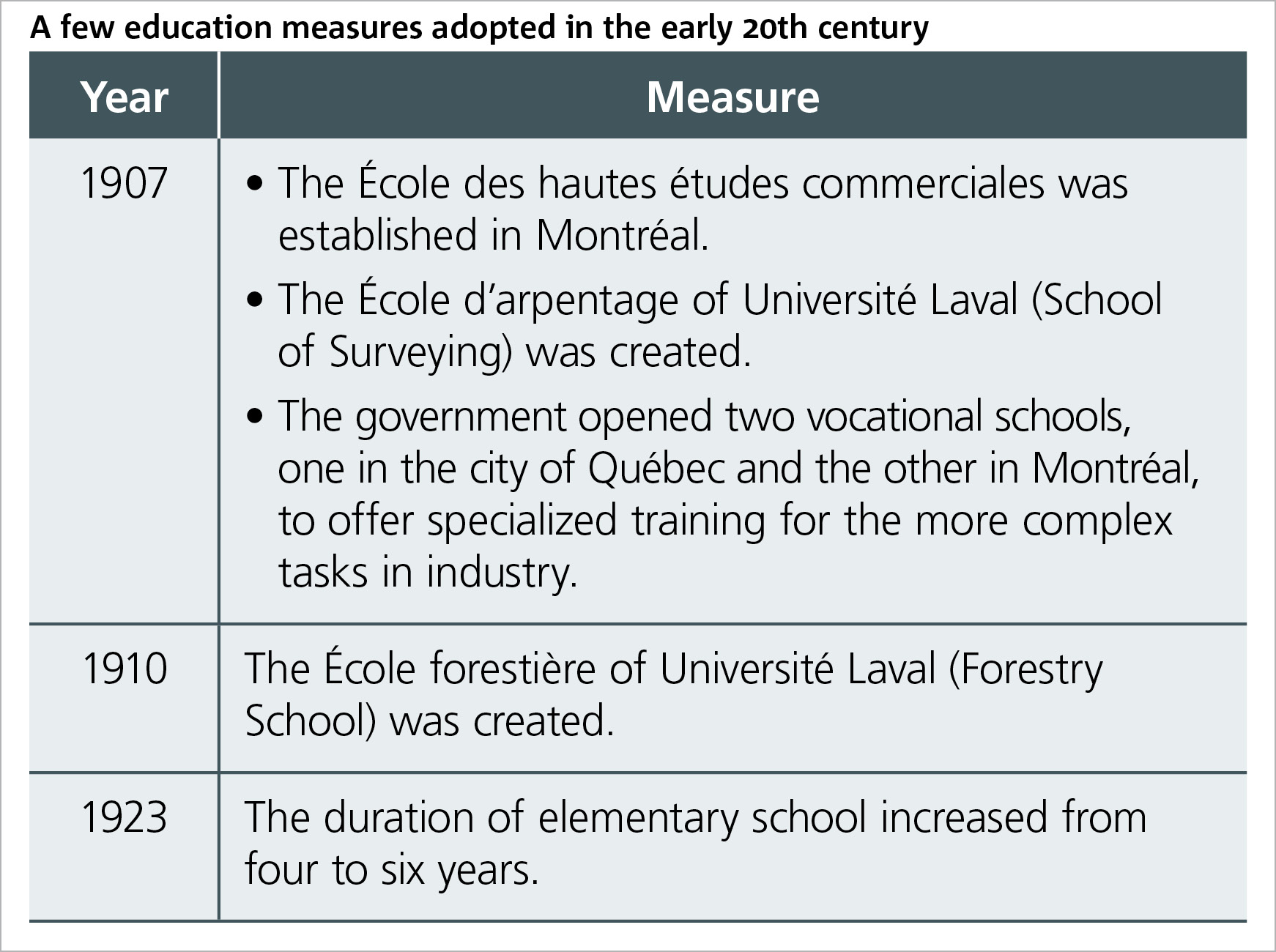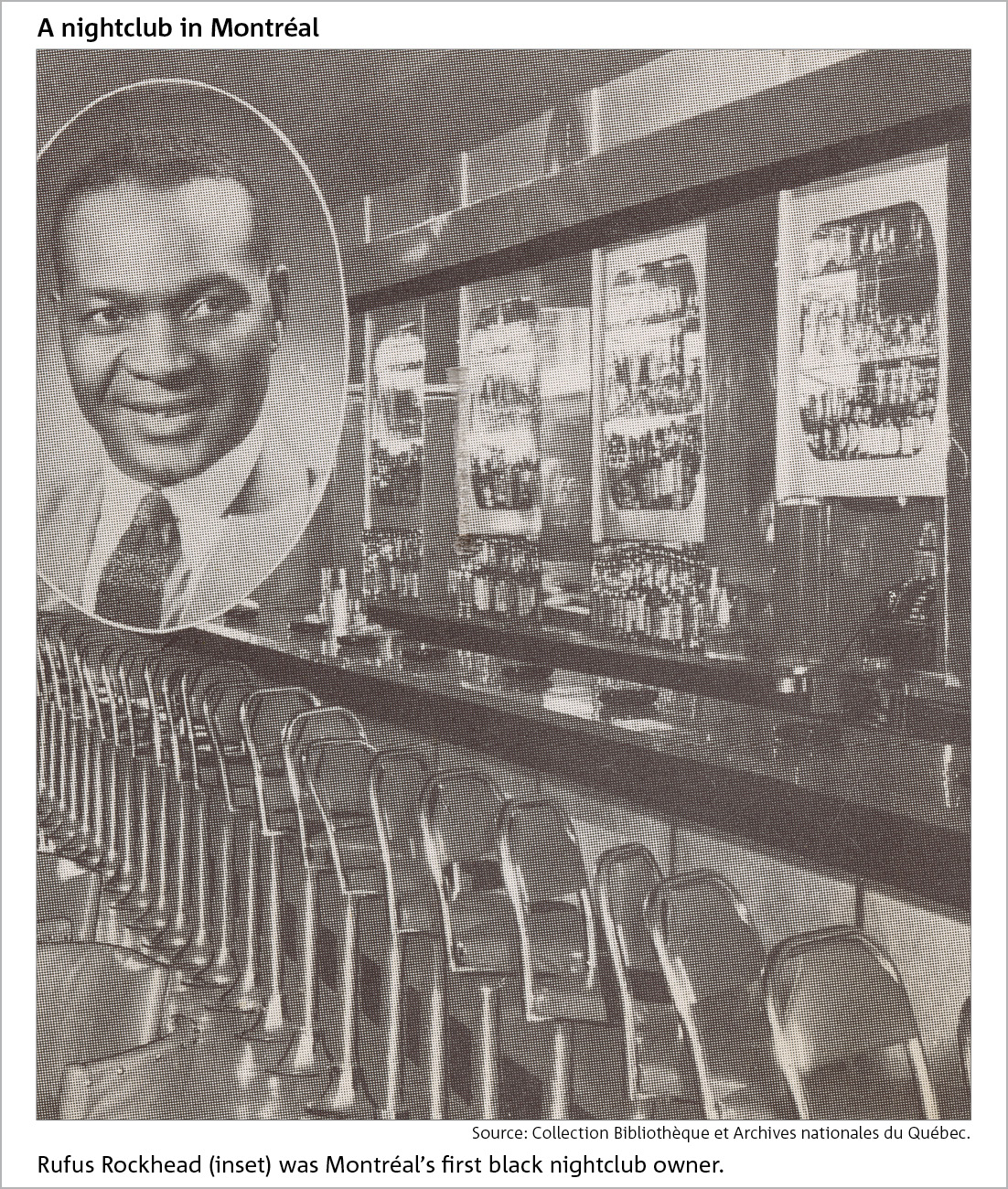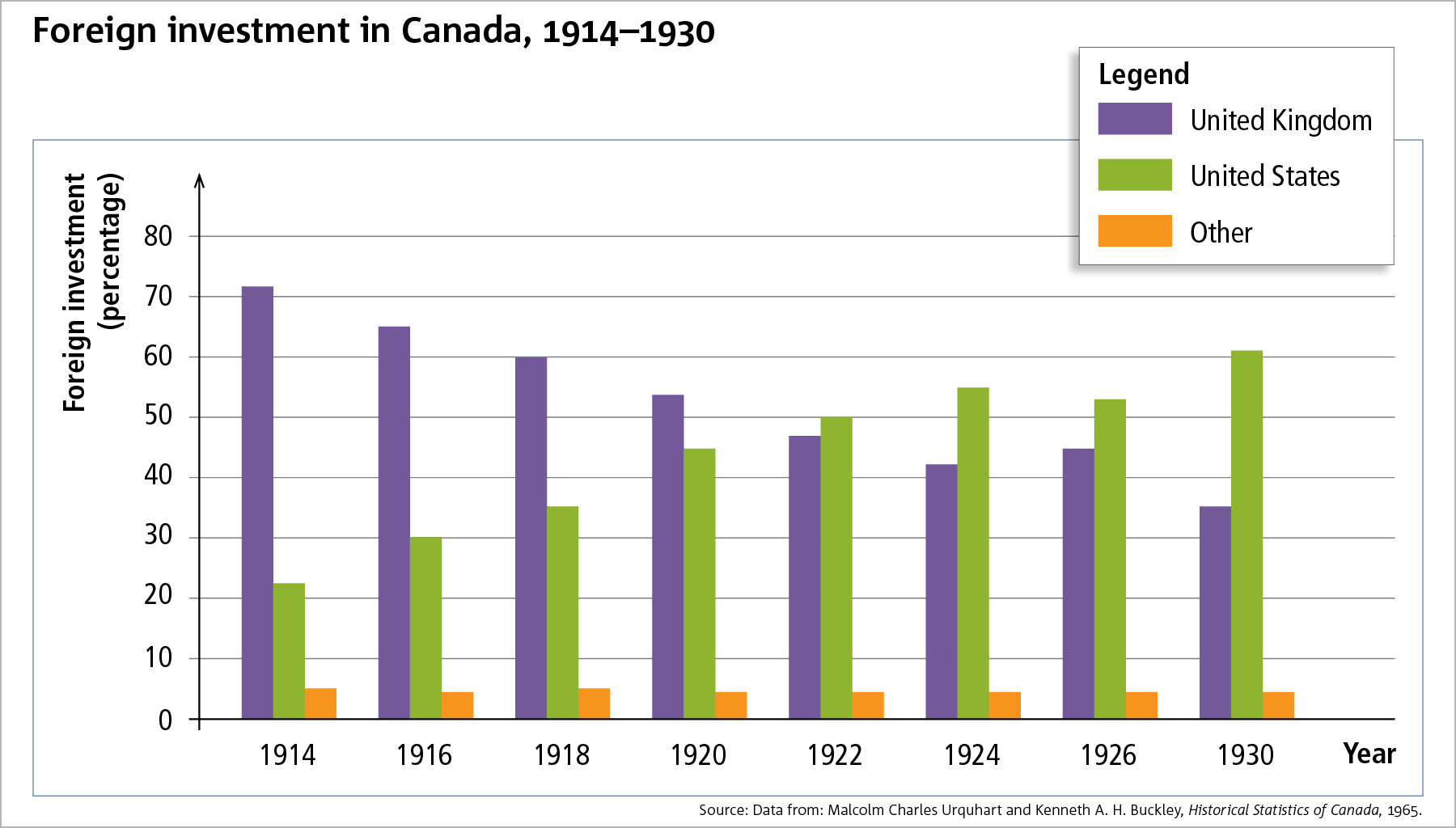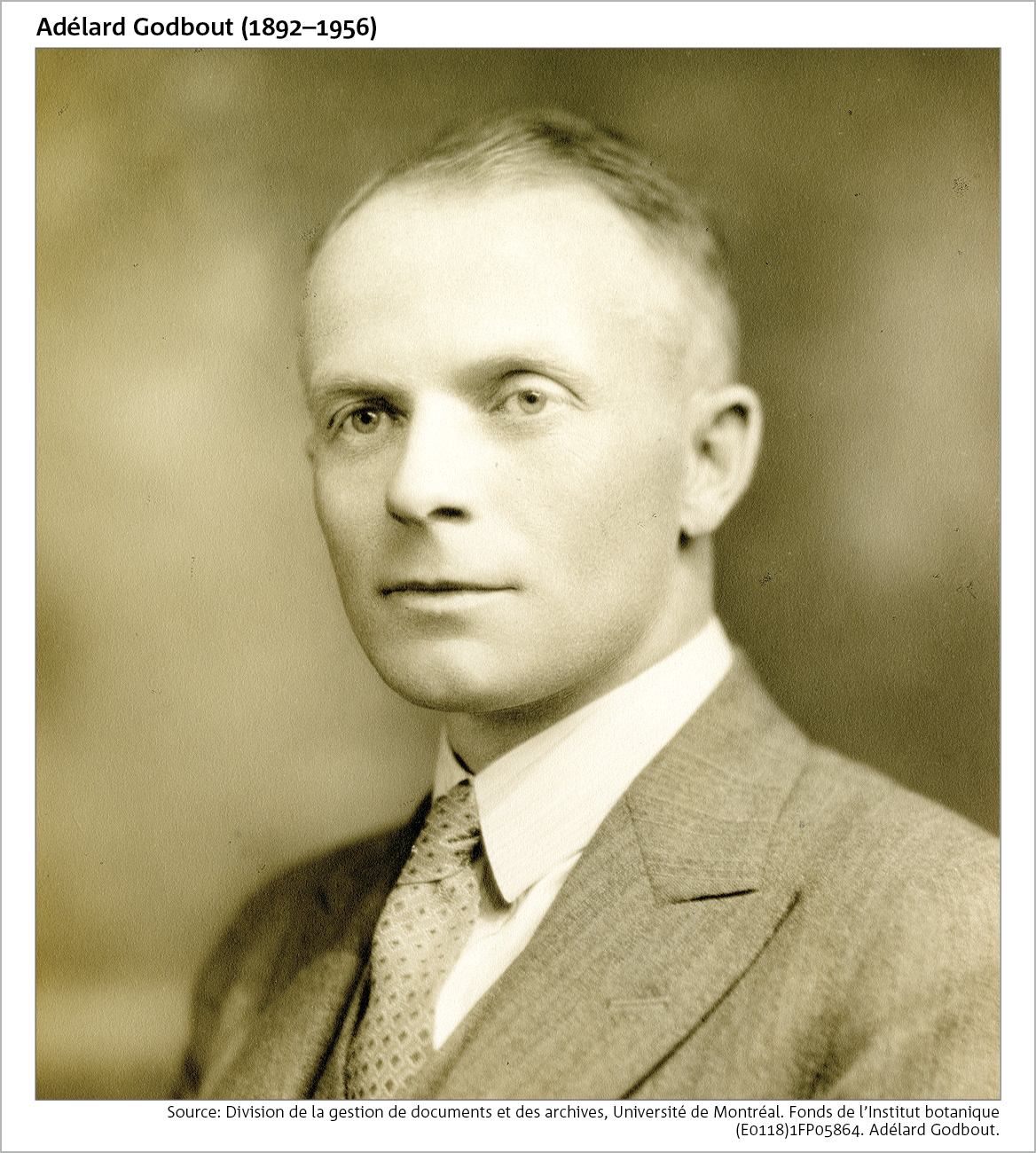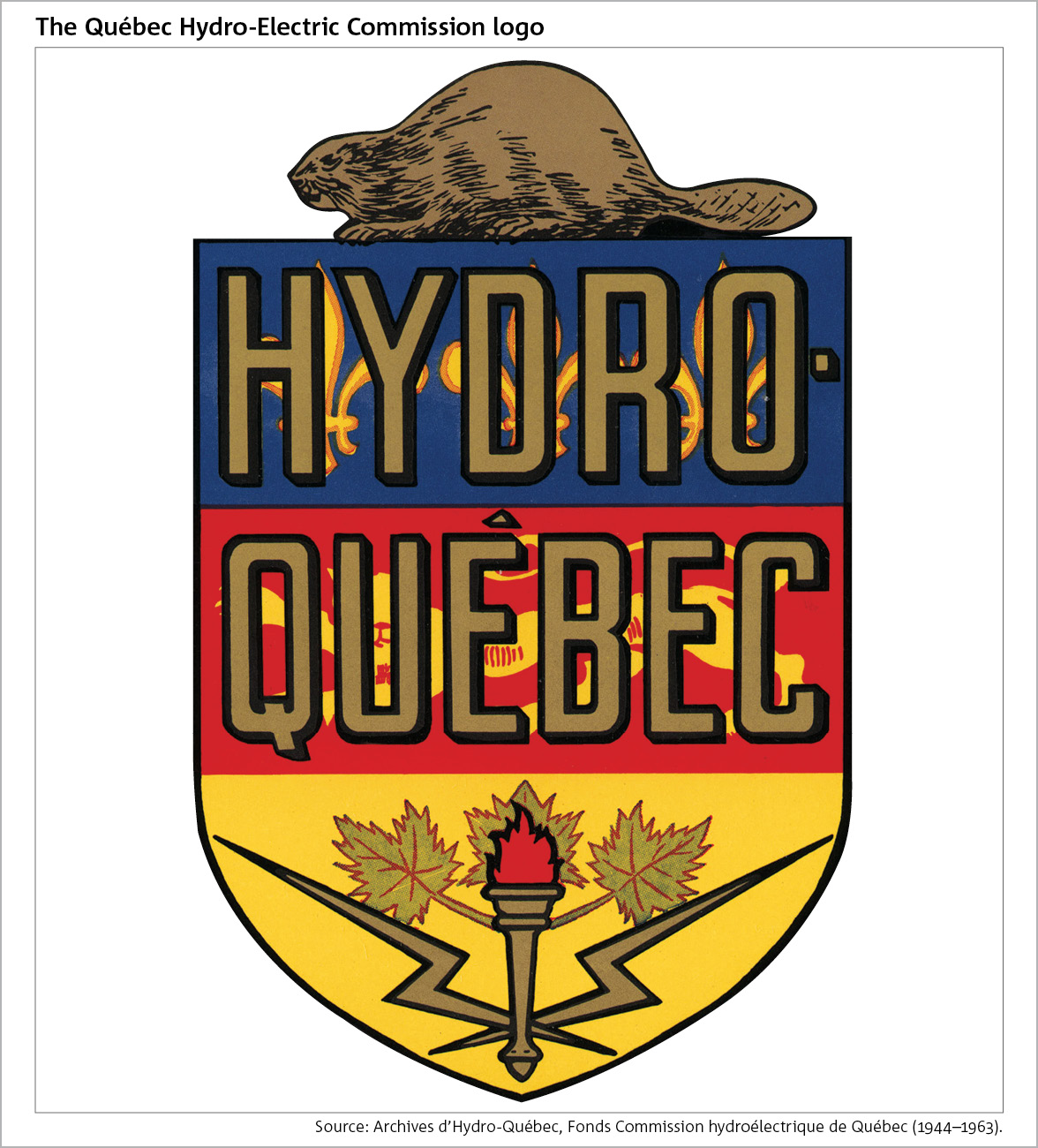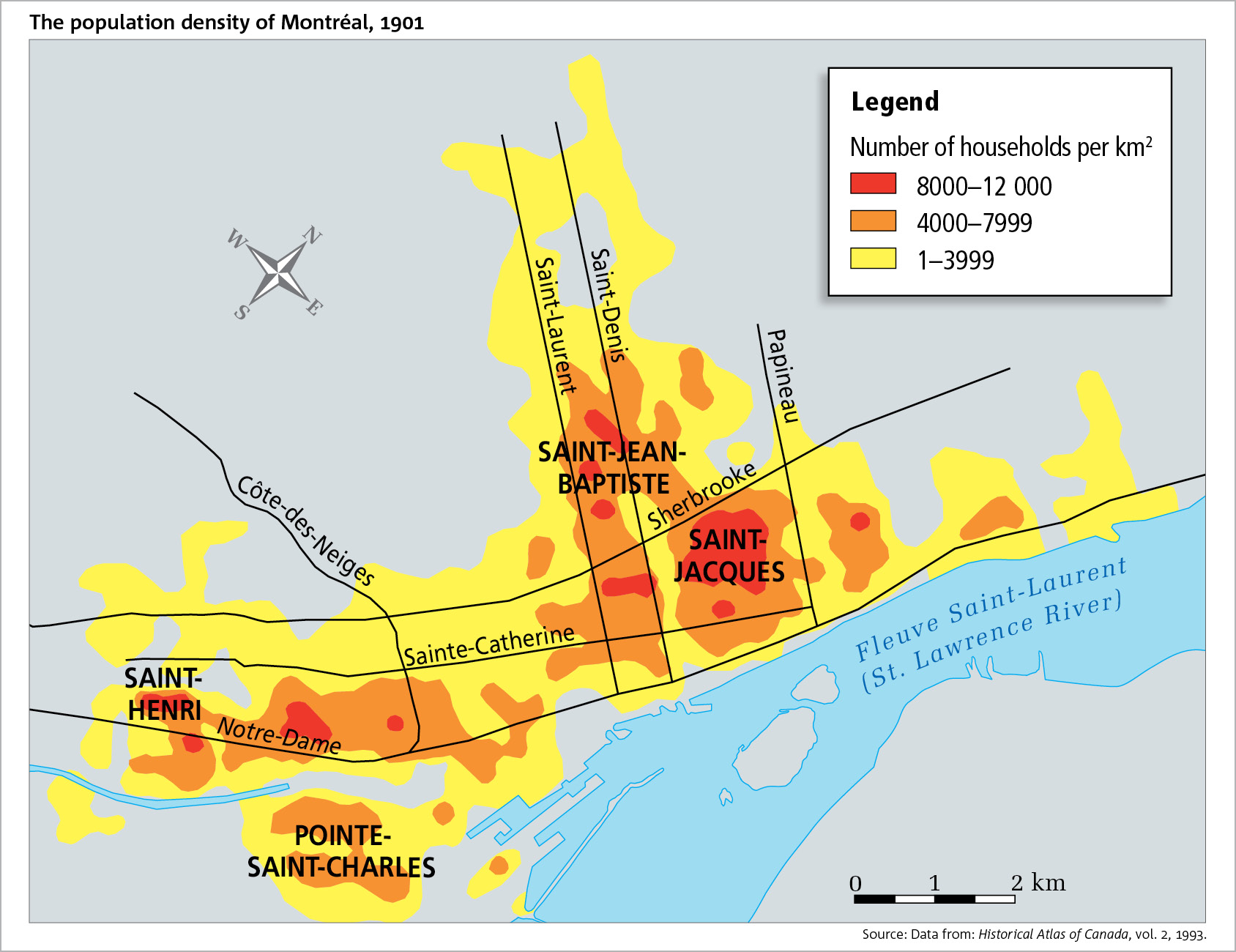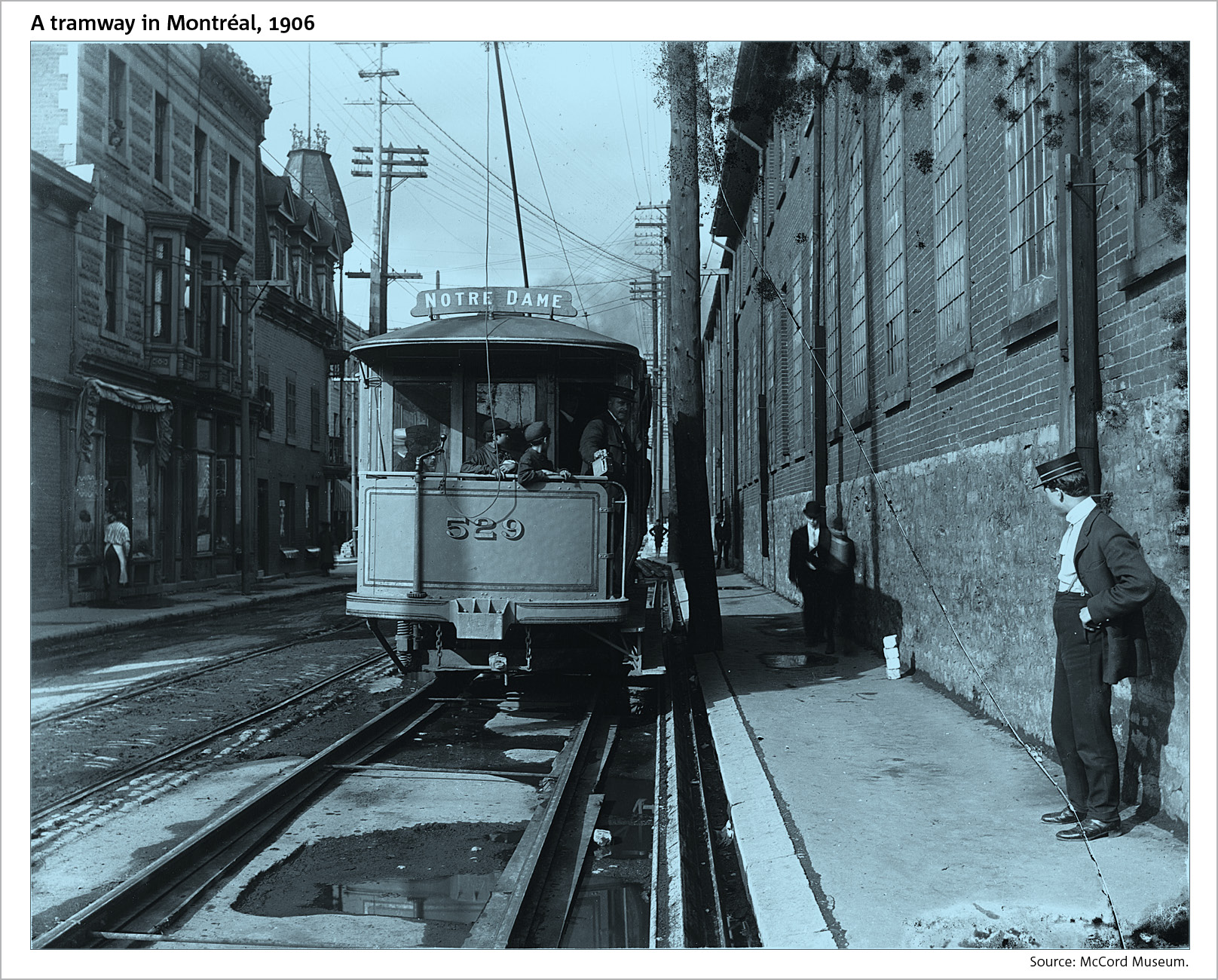Click on the different concepts to explore the content.
Power
- Canada sought to assert its autonomy in the British Empire.
- During the two world wars, conscription divided French Canadians and English Canadians.
- During the two world wars, the federal government implemented several measures in order to supply the war effort. In this context, the federal government intervened more broadly in provincial jurisdictions.
- In 1931, the Statute of Westminster granted Canada almost complete autonomy.
- After several decades in power (from 1897 to 1936), the Liberal Party of Québec was defeated by a party that advocated a traditional and conservative way of life: the Union nationale, led by Maurice Duplessis. The Union nationale was defeated in 1939 by Adélard Godbout’s Liberal Party, which held power until 1944.
Territory
- To counter emigration to the United States and the impact of the Great Depression, the Québec government revived colonization programs to settle the regions.
- The wealth of natural resources and strong hydroelectric potential in the territory formed the basis for Québec’s industrial growth.
- The exploitation of natural resources contributed to the development of certain regions.
- Two new provinces, Alberta and Saskatchewan, were created in 1905.
- Labrador’s boundary was redefined in 1927.
Economy
- The turn of the century saw Canada embark on a second phase of industrialization and the emergence of monopoly capitalism.
- Canada’s foreign trade expanded but its trade balance was sometimes negative between 1896 and 1929.
- The Roaring Twenties were marked by significant economic growth.
- A stock market crash occurred in October 1929. In particular, it plunged Western economies, including Canada’s, into an economic depression, called the Great Depression.
- During the Great Depression, the unemployment rate climbed, prompting governments to implement measures to revive the economy.
- The nationalists of the École sociale populaire denounced the excesses of capitalism and advocated cooperatism as a means to develop the rural economy.
Society
- Canada welcomed hundreds of thousands of immigrants. They contributed to giving the country a more multiethnic character. A xenophobic movement emerged in response. During the two world wars, immigration to Canada plummeted, particularly as a result of more severe immigration policies.
- Workers’ living and working conditions were very difficult. Labour legislation was gradually implemented, but workers had a hard time making themselves heard. Some unions resorted to strikes.
- The Catholic Church in Québec possessed great moral and cultural influence over French Canadian society.
- Movements continued their struggle for change in society, including the reformist and feminist movements.
- During the two world wars, many women worked in factories in order to meet labour demands.
- Women won the right to vote at the federal level in 1918 and in Québec in 1940.
Culture
- Imperialists placed great importance on the cultural and political ties that bound Canada to the British Empire. They promoted the English language, patriotism, and the defence and expansion of the British Empire.
- French Canadian nationalists demanded, in particular, greater autonomy for Canada and better protection of Francophone Catholic minority rights. Starting in 1920, the French Canadians who subscribed to clerico‑nationalism believed that a rural way of life and conservative values would ensure the protection of their identity and culture.
- The federal government created the Indian residential school system in Canada with the goal of assimilating Indigenous people.
- Francophone Catholic minorities were subject to laws that reduced and limited instruction in French.
- The Québec school system had significant shortcomings, including the low level of schooling among Francophones compared with that of Anglophones. Vocational schools were created to respond to new needs.
- During the Roaring Twenties, Canadians wanted to take advantage of the economic prosperity: their consumption increased and they indulged in more entertainment.
- The Great Depression prompted the emergence of new political parties.
Imperialism
- Many English Canadians were imperialists as a result of the cultural and historical ties that bound them to the United Kingdom, and they expressed pride in belonging to the British Empire.
- Imperialists believed that Canada was protected within the Empire and that Canada should take part in its expansion throughout the world.
- A number of imperialists felt that English should be Canada’s only official language and Protestantism, the only official religion.
Liberalism
- Québec Liberals, in power from 1897 to 1936, adopted policies to attract foreign investors.
- French Canadian nationalists influenced by economic liberalism advocated that French Canadians be involved in the business world.
- Godbout’s Liberal government, in power from 1939 to 1944, embarked on reforms in an effort to democratize and modernize Québec.
Urbanization
- Starting in the 1910s, most Quebecers lived in cities.
- Socio-economic disparities persisted or worsened between working-class neighbourhoods and wealthier neighbourhoods.
- Working-class neighbourhoods were very densely populated, leading to the propagation of epidemics.
- Provincial, federal and municipal governments took steps to offer a better quality of life to citizens in urban areas.

